You hear a lot about flower nectar, when people talk about growing “flowers for bees”, but you don’t hear nearly as much about pollen. And given that pollen, and by extension pollination, is the principal quid pro quo in the evolutionary pact that sees bees trade sex services for food, much more should be written about pollen. It is of vital importance to the bee larvae, for which it is the protein that develops their growth. In one of my classic old books on beekeeping, Plants and Beekeping by F.N. Howles (1945), he writes: “It has been calculated that about ten average bee loads of pollen are necessary to produce one worker bee and that on an average one pound of pollen rears 4,540 bees, which works out at about 44 lb. of pollen for an average colony’s breeding requirements in a season.” Without sufficient pollen, the colony would die off.
Because I spent several years photographing honey bees (Apis mellifera) for a book idea I once had, I got to see a lot of pollen up close and personal, like the golden pollen being patiently collected from Gaillardia ‘Mesa Yellow’, below.
I saw bee faces completely dusted with sticky pollen; I watched them perform aerial dance maneuvers as they packed pollen into their corbiculae, before settling back onto flowers; and I observed them flying back to the hive, legs laden with saddlebags of pollen in all colours of the rainbow, like the white datura pollen below.
It’s pollen colour in all its wonderful variety that I want to celebrate here, from the first blossoms of spring to the last of autumn.
Let’s start with hardy perennials and bulbs. Crocuses have very large pollen grains. I’ve watched honey bees curling their entire bodies into silken crocus chalices, like C. x lutea ‘Golden Yellow’, below.
Siberian squill (Scilla siberica) produces azure-blue pollen.
Little striped squill (Puschkinia scilloides) rewards visitors with beige pollen.
Grape hyacinths (Muscari armeniacum) can often be seen with bees working the flowers as they open from the bottom of the spike up. Pollen is whitish-cream in colour.
Orchards are filled with bees in spring, among them honey bees, thus ensuring that there will be tasty fruit come late summer. This is the hardy ‘Reliance’ peach (Prunus persica) with light-brown pollen.
The Dutch call alpine rockcress (Arabis alpina) “honigschub’ or honey bush and it’s easy to see why. Very early in spring, before most perennials have thought about emerging, arabis is feeding the bees nectar and a sticky light-brown pollen.
Although forget-me-nots are prodigious nectar sources – especially considering the vast quantities of the tiny flowers in spring gardens – their pollen grains are among the smallest measured and from my observations, not very prominent in corbiculae (pollen baskets). But for a bee to insert its tongue into the narrow corolla of a forget-me-not, the net result will be that some pollen will dust off on the proboscis and the head, which the bee will gather for the hive. And because of that narrow opening, pollen is often mixed in with the nectar that forget-me-nots yield, and is measurable in the honey.
Though the shrubby European honeysuckles like Lonicera tatarica, below, can be invasive, they are good early sources of pollen.
The bright-orange pollen of California poppy (Eschscholzia californica) is always a great lure for honey bees.
When the yellowwood tree (Cladrastis kentukea) has a good year for bloom – sometimes just one year in three – the flowers with their tawny-gold pollen are avidly sought out by honey bees and native bumble bees and solitary bees.
Beekeepers always know when Oriental poppies (Papaver orientale) are in flower, because homecoming bees are dusted with black pollen.
Peony stamens are a rich source of pollen, with one count estimating a single peony might have 3.5 million pollen grains. This is Paeonia ‘Sunday Chimes’, below.
The knotweeds (Centaurea sp.) are excellent plants for bee forage, and beautiful in the late spring-early summer garden. Globe centaurea (Centaurea macrocephala) offers pollen in golden-yellow…..
….. while Centaurea dealbata ‘John Coutts’ produces creamy-beige pollen.
Southern magnolia (Magnolia grandiflora) is irresistible to bees when the prominent stamens are yielding their creamy-white pollen, below.
Native American copper iris (I. fulva) is popular with hummingbirds, but on the High Line one day, I watched honey bees patiently working the flowers and securing ample loads of near white pollen.
Knautia macedonica is my very favourite pollen producer, yielding a rich magenta-pink pollen that makes honey bee faces look adorable and their packed corbiculae seem like airborne jewelry.
Roses, especially single and semi-double forms with prominent stamens, are often good sources of pollen, which they yield mostly in the morning, apparently. The David Austin shrub below produced amber-brown pollen.
Not to be confused with true roses, Mediterranean rock roses (Cistus species) are also popular with honey bees. The bright-pink hybrid below produced a rich golden-orange pollen.
Certain clematis species are good sources of pollen. One that flowers in early summer is Clematis koreana – and the bee working it had packed a jewel-like pollen pearl in her pollen basket.
Filipendulas are good forage plants and native qneen-of-the-prairie or meadowsweet (Filipendula rubra) provides pollen in early summer for native bees and honey bees. This is the showy cultivar ‘Venusta’ with creamy-white pollen.
Bumble bees and honey bees are always buzzing around globe thistles (Echinops sp.), which yield a whitish pollen from the masses of tiny flowers.
To see a planting of helenium or sneezeweed (Helenium autumnale) in full sun in late summer is to see a happy bee festival. And the abundant pollen is rich orange. One source mentions the bitter nature of helenium honey, but at the point where helenium is in flower, beekeepers are often letting the bees collect nectar for winter honey stores.
Japanese anemones (Anemone x hybrida) yield neglible nectar but the yellow stamens are rich sources of white pollen.
With its masses of tiny, white flowers, sweet autumn clematis (Clematis terniflora) is very popular with bees. I watched the honey bee below doing an intricate aerial dance to pack in white pollen from a massive vine.
By the end of summer into early autumn, the various goldenrods and asters (Michaelmas daisies) offer nectar that is often vital for bees to survive winter, though most beekeepers must provide additional winter food for their bees. (Goldenrod makes a strong honey that is not generally sold commercially.) But bees also collect pollen from these late perennials, like the very late-blooming showy goldenrod (Solidago speciosa), below, with its golden-yellow pollen. This will help sustain the hive until spring.
Of the asters, I loved this image of a bee hanging from lance-leaved aster (Symphyotrichum lanceolatum), its corbicula packed with yellow pollen…..
….. and the beautiful New England aster (Symphyotrichum novae-angliae) and its many cultivars, like the one below, are well worth growing in every garden – something lovely for you and the bees as the season ends.
Annuals and tender perennials and bulbs can also be good sources of colourful pollen. This is Ageratum houstonianum with lots of pure white pollen.
Sunflowers (Helianthus annuus) and their many cultivars are a treat for all types of bees, especially the native sunflower bees adapted to this North American flower. But honey bees enjoy nectaring on the tiny ‘true’ flowers and gathering the yellowish pollen, too.
Single portulacas (P. grandiflora) have bright orange pollen, as you can from the bee crawling out of the silky blossom below.
I’ve seen lots of tender S. African bulbines (B. frutescens) growing in summer gardens recently, much to the delight of honey bees gathering pale yellow pollen from the feathery stamens.
Weeds like Canada thistle (Cirsium arvense) are never appreciated by gardeners, and many are highly invasive and on noxious plant lists. But you will often see bees of all kinds foraging for nectar and pollen on thistles…..
….. and dusting themselves completely with the white pollen of the pretty blue summer flowers of chicory (Cichorium intybus)…..
…. and flying about with the telltale yellow ‘pollen head’ that is a sure sign that the bee has been in a toadflax flower (Linaria vulgaris).
Finally, I’d like to include a few vegetables that bees like – not for the stems or the roots, but for the flowers that have resulted from the plants “bolting”. This is what happens to a radish (Raphanus sativus) when it’s going to seed – yellow pollen much appreciated by this little honey bee.
Brassicas like broccoli, cabbage, kale and Brussels sprouts also form flowers as part of their biennial life cycle – and the bees love the yellow pollen that forms.
Last but not least, a perennial vegetable we all know and love for its tender spring shoots – but have you watched bees gathering bright orange pollen from the tiny, yellow male flowers? It is a feat of acrobatics worthy of any high-flying trapeze act!
(PS – Are you a bee-lover? To see a large selection of my honey bee stock photography, visit my Smug Mug pages. And you’ll find a load of bumble bees and other native North American bees and bee kin on my page as well.)

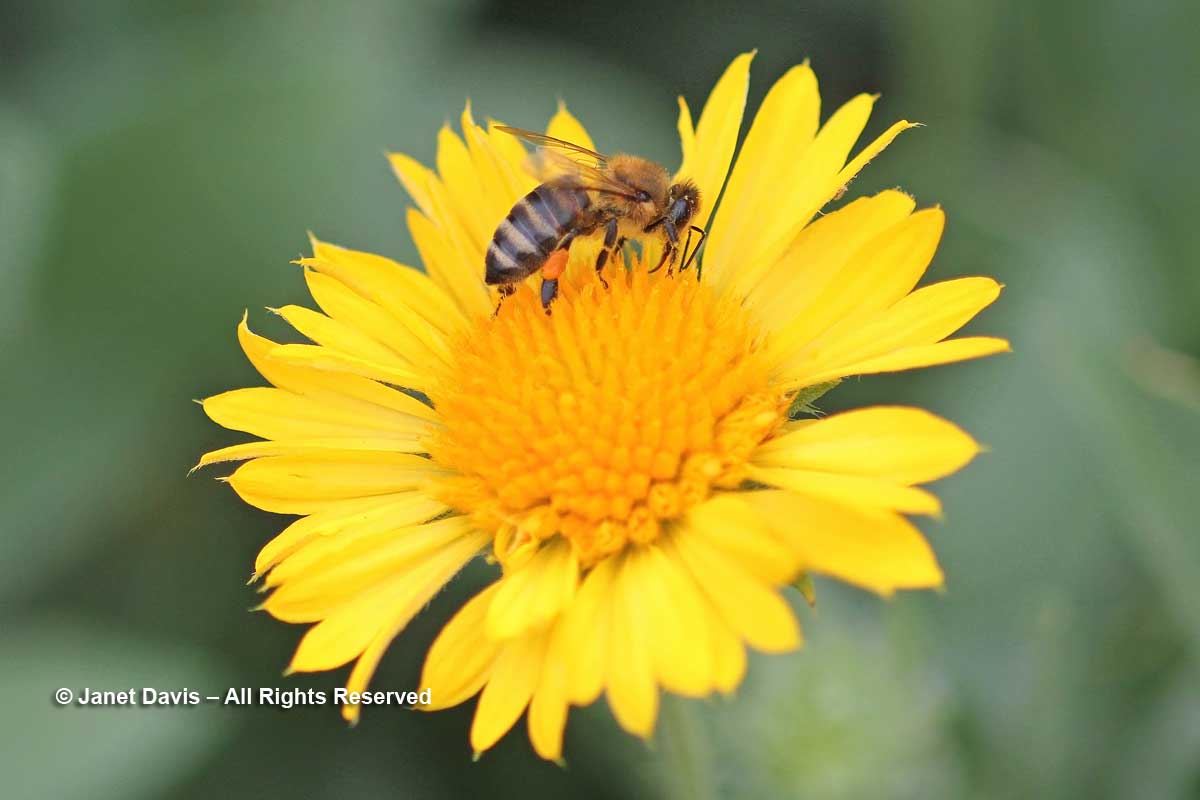
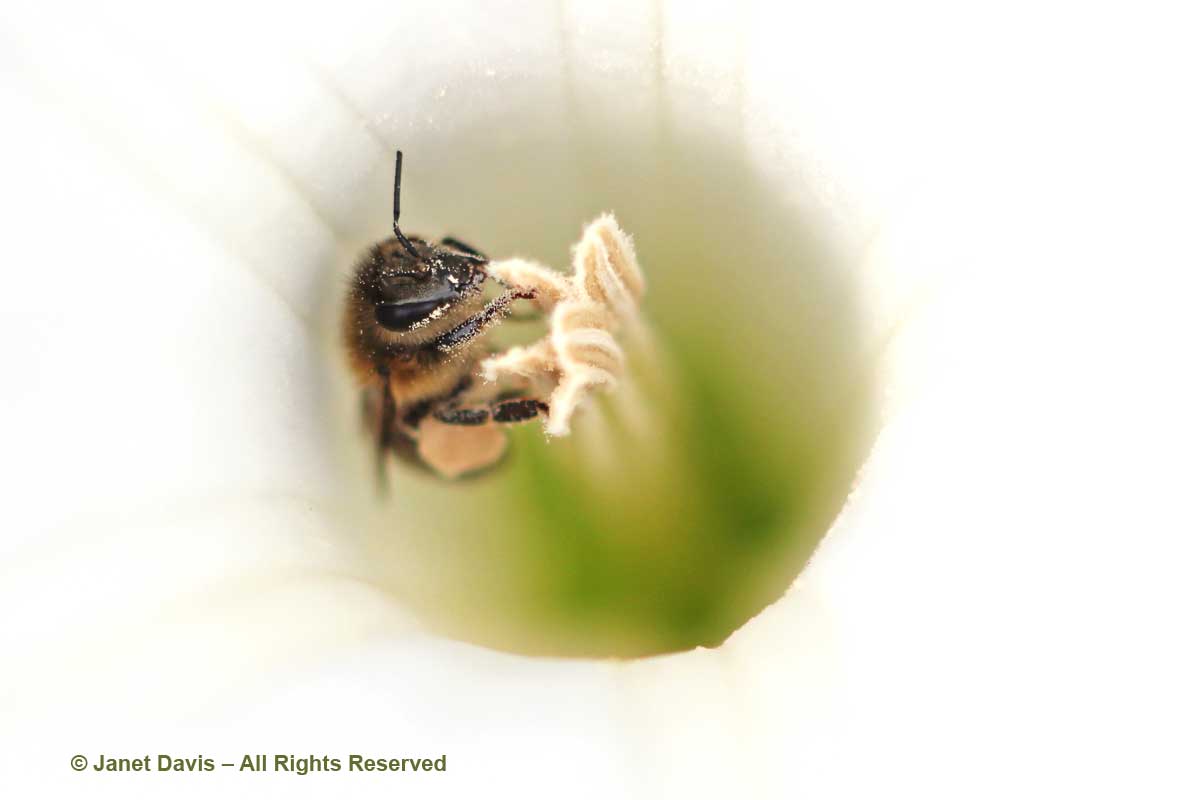
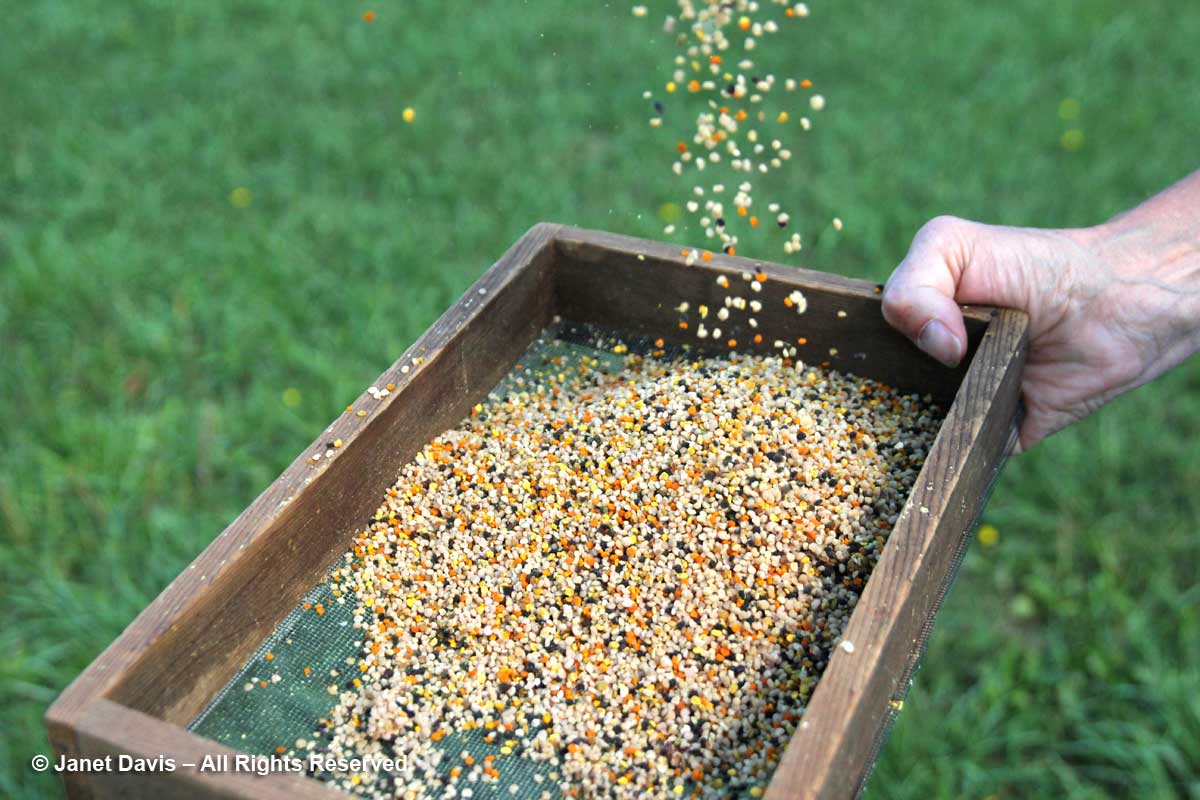
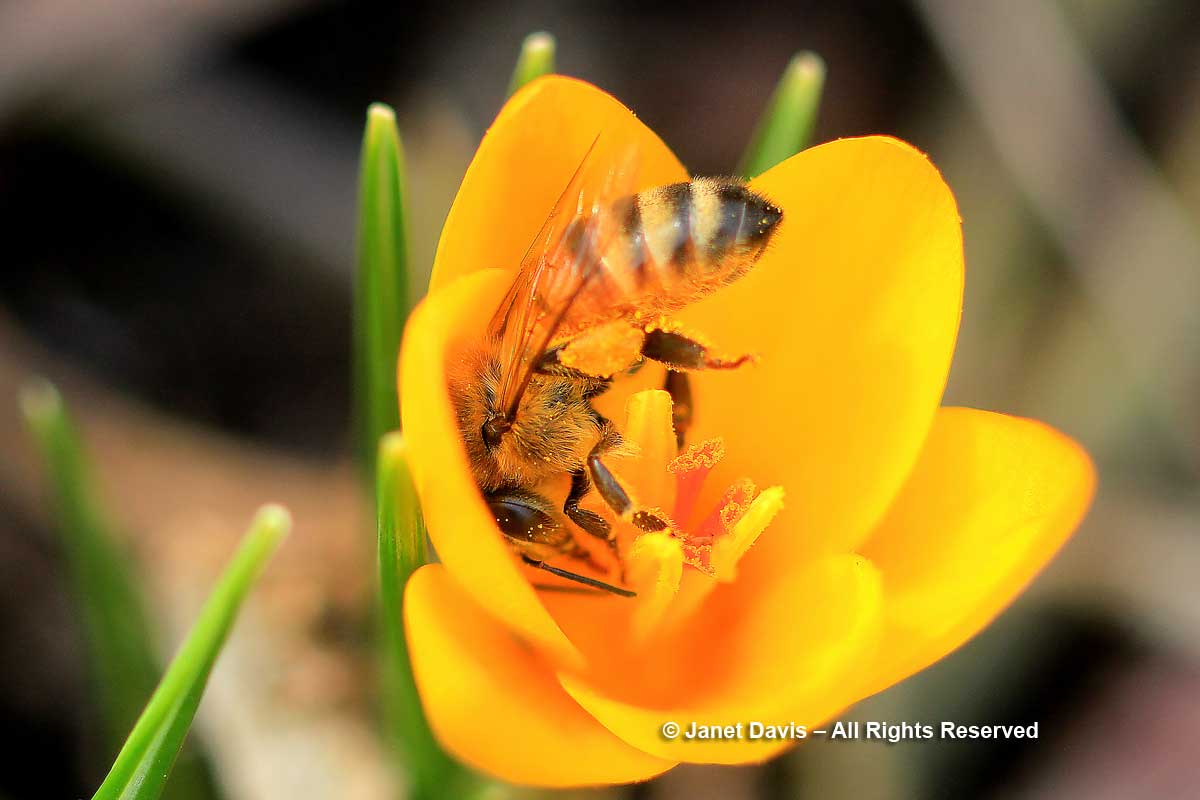
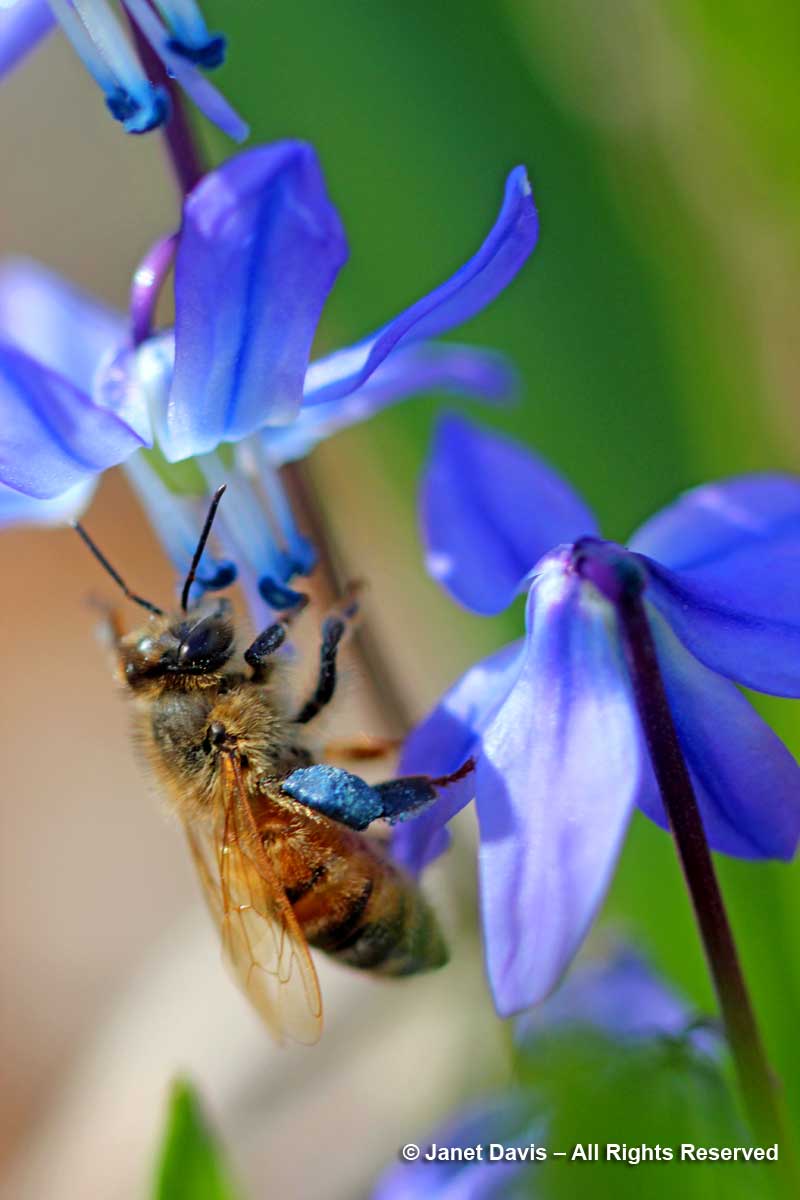
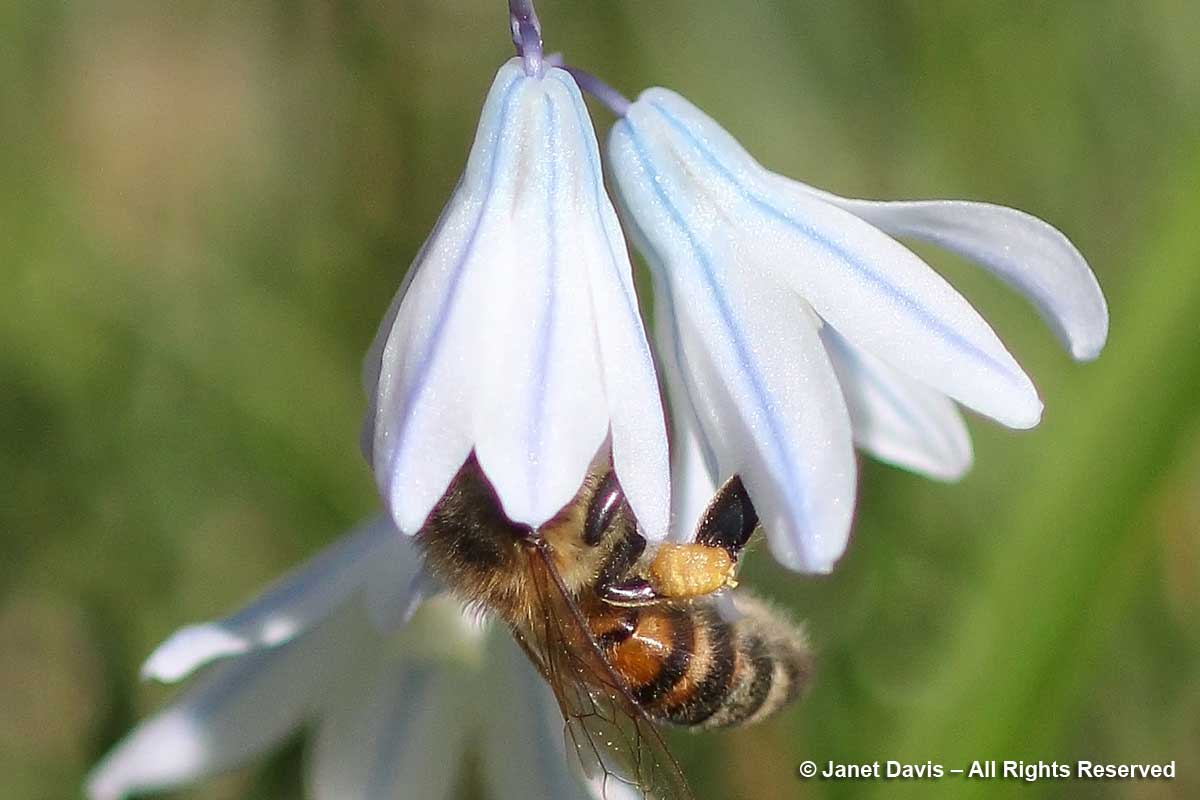
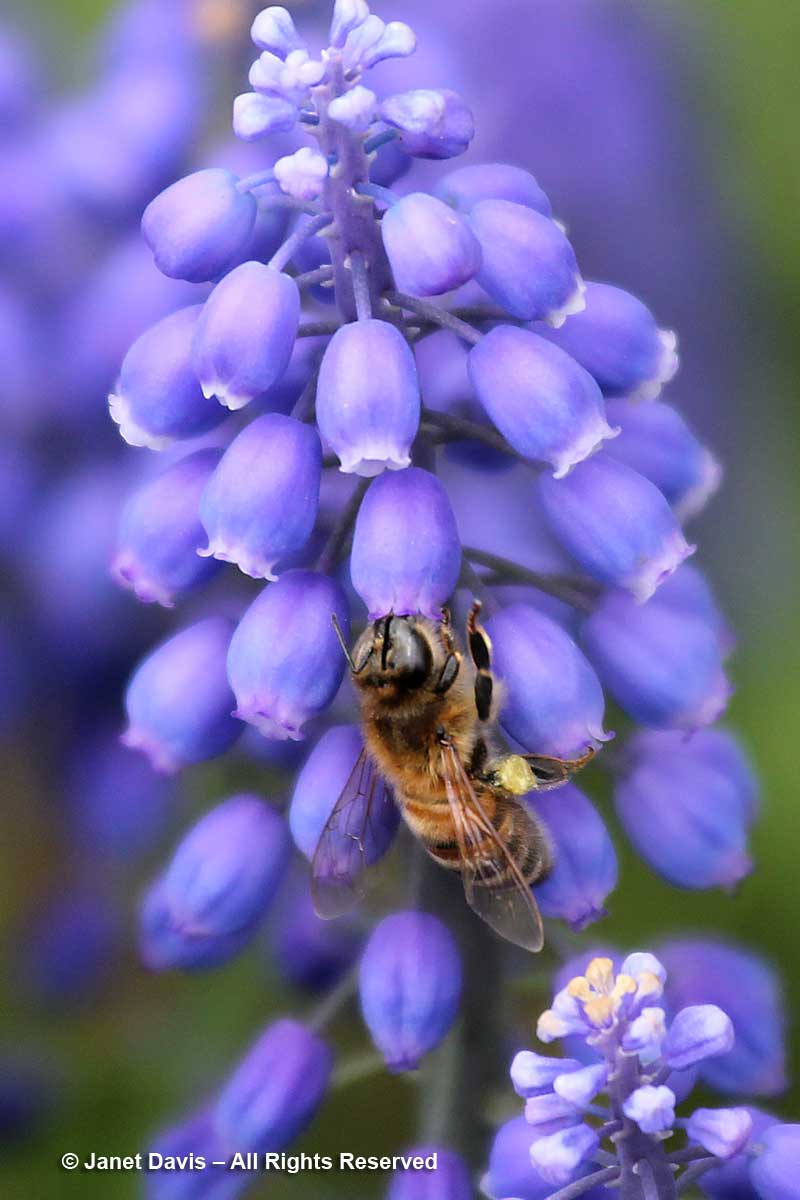
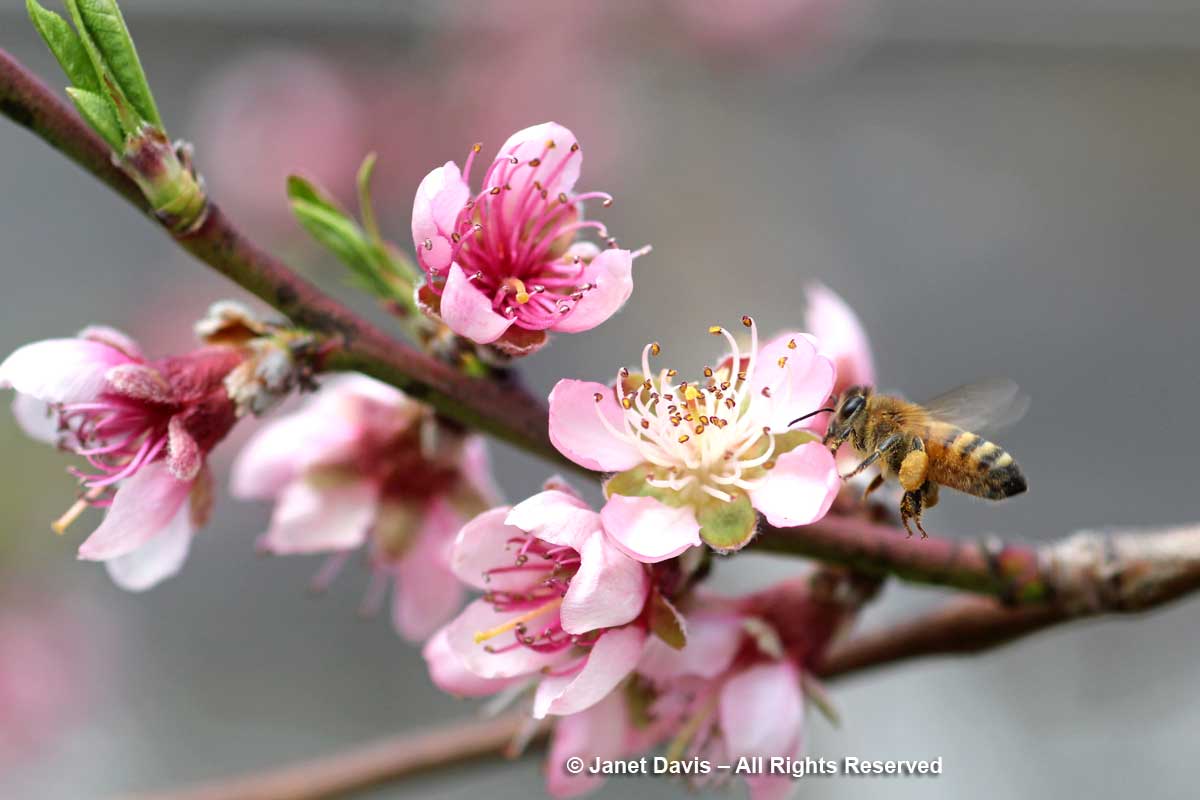
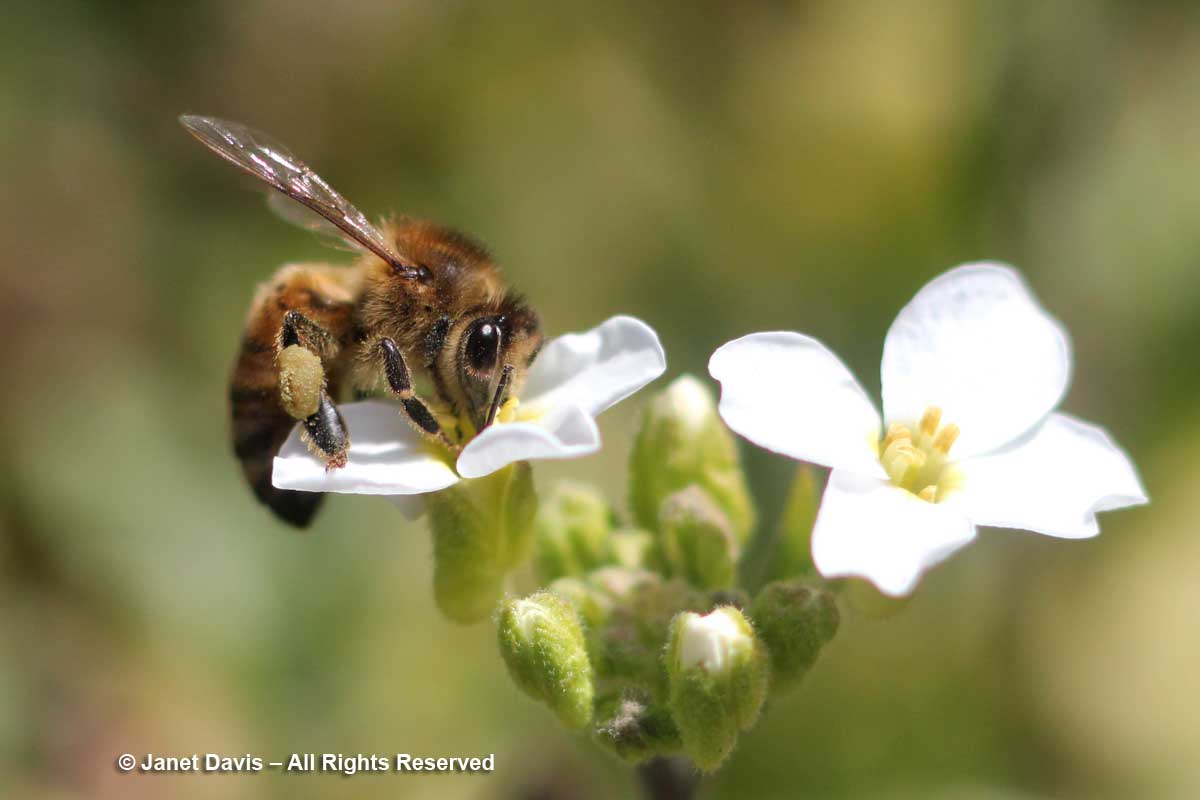
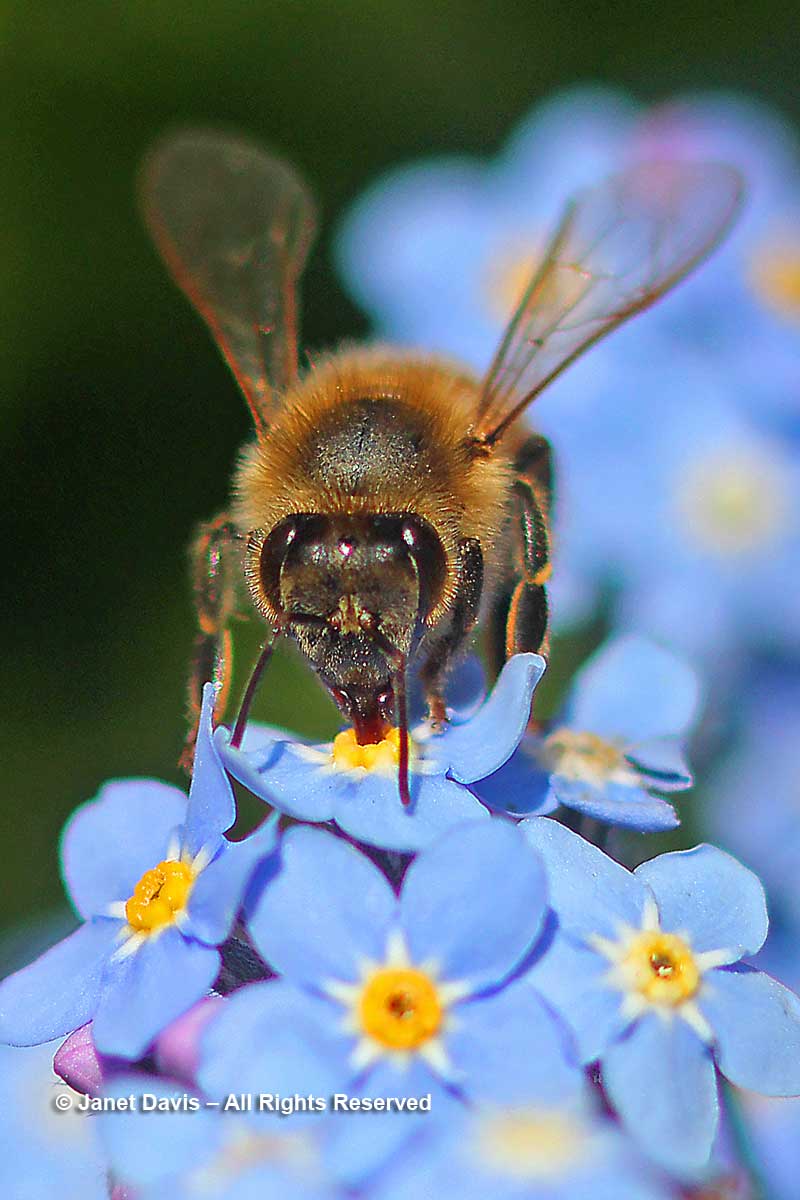
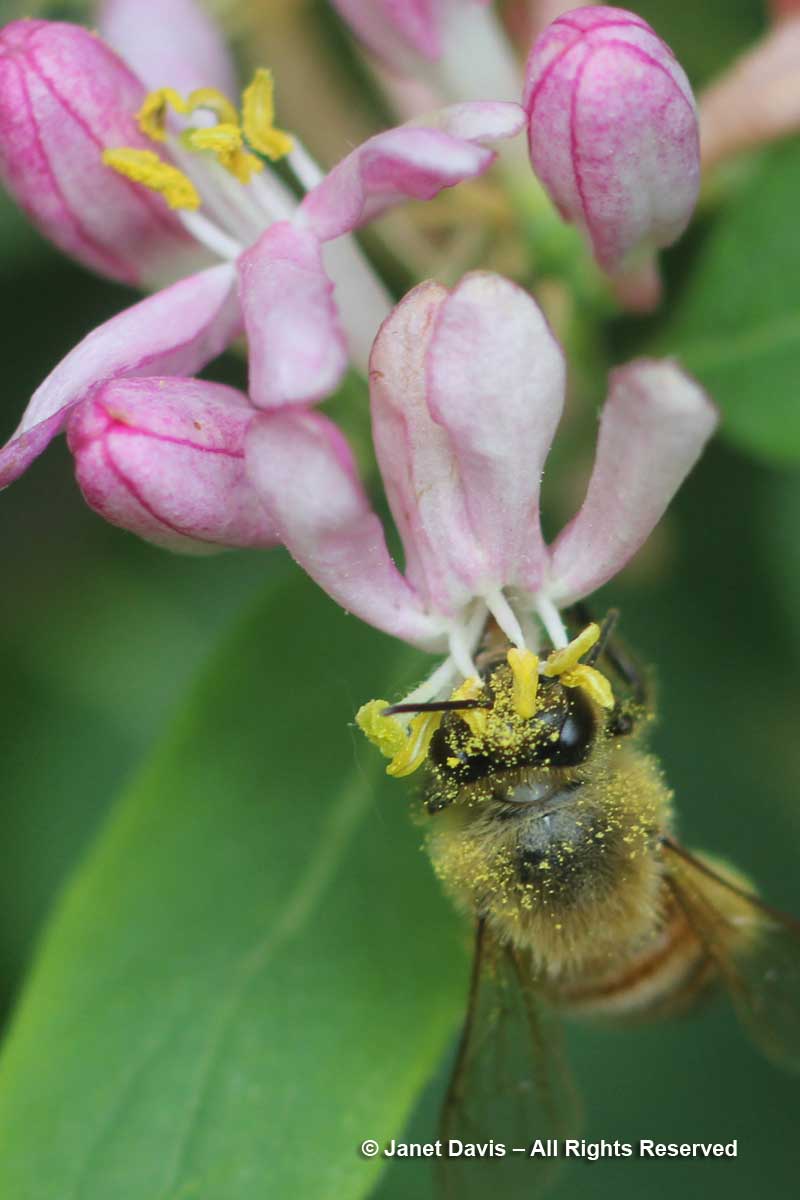
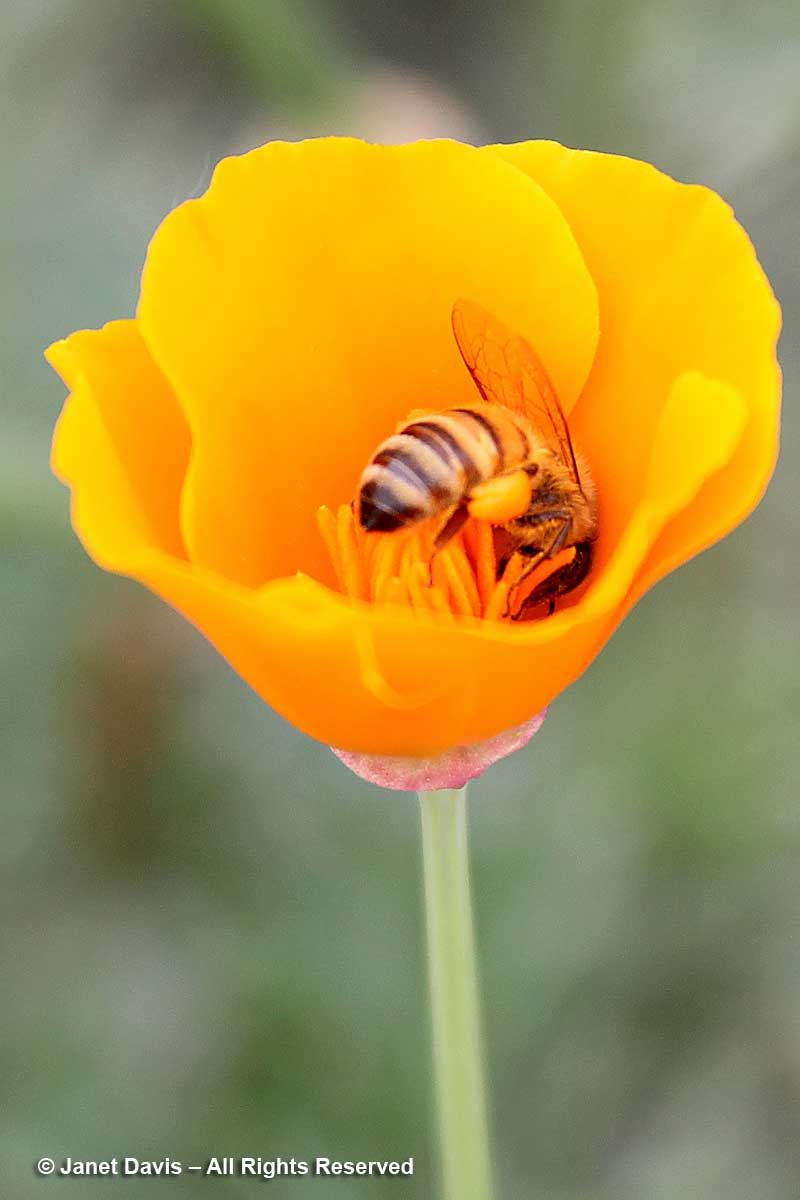
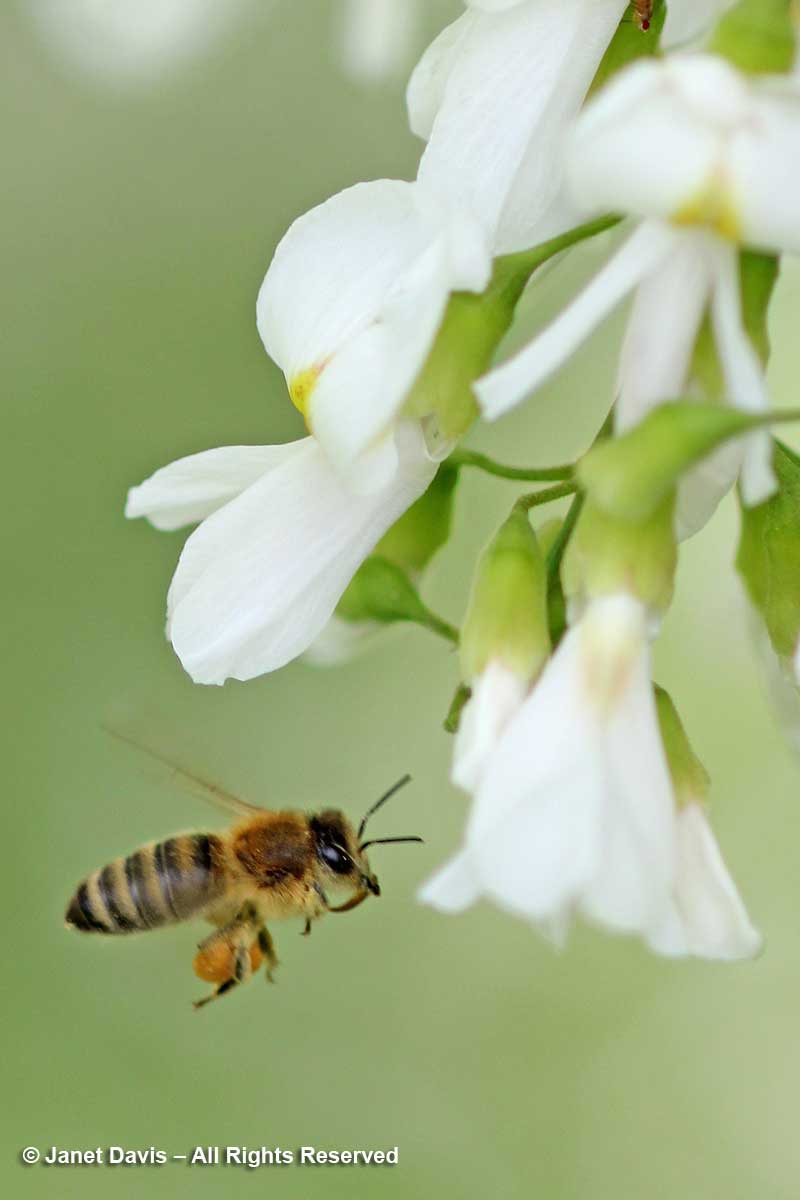
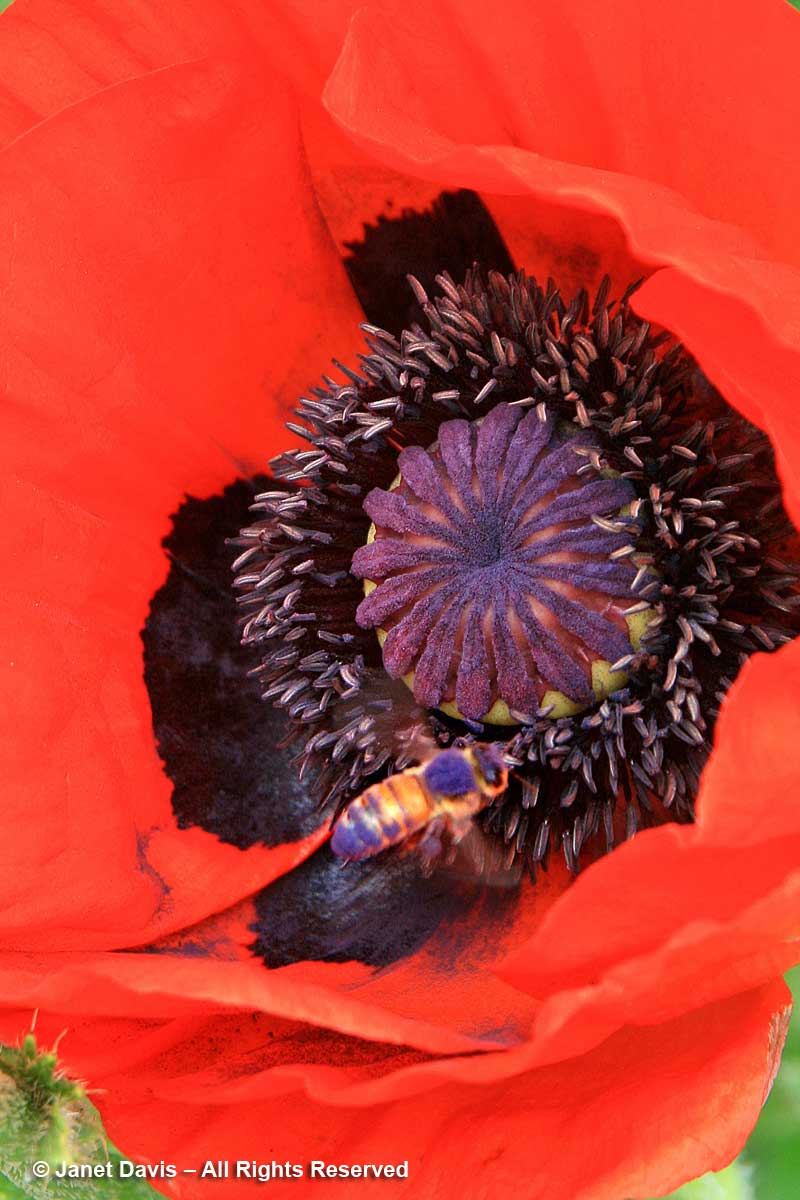
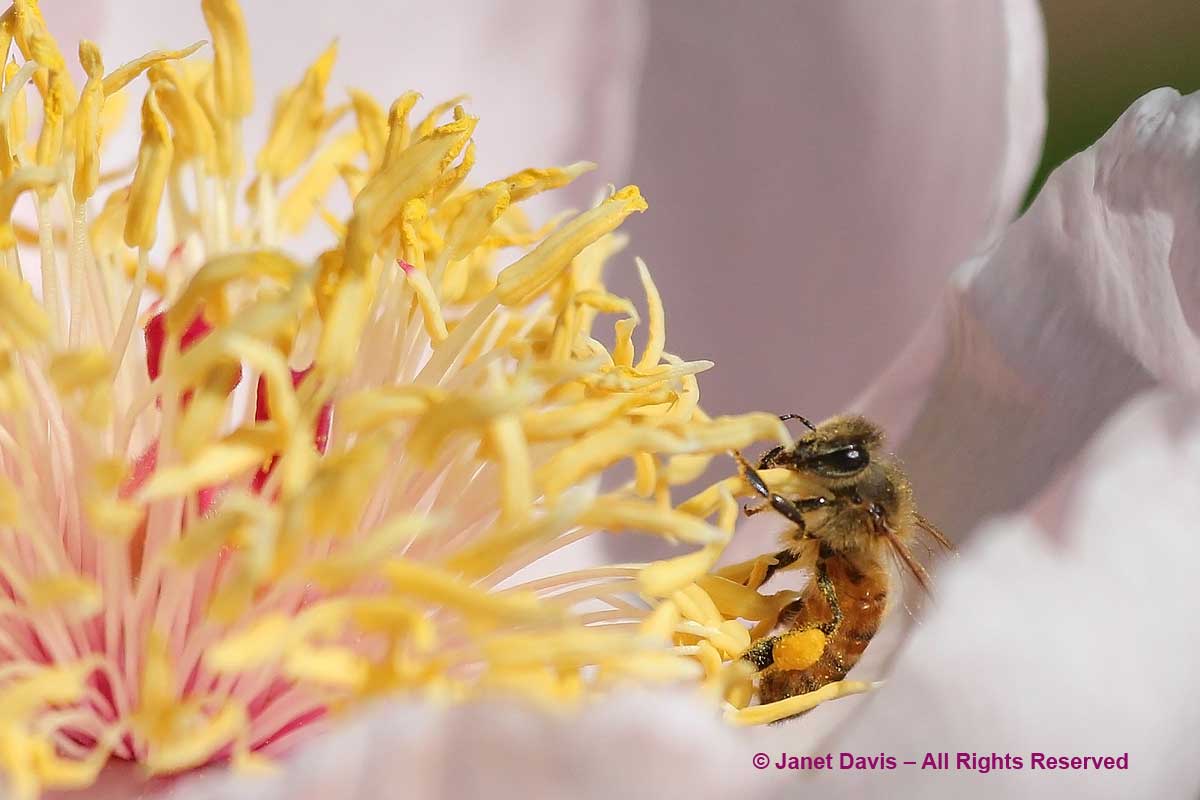
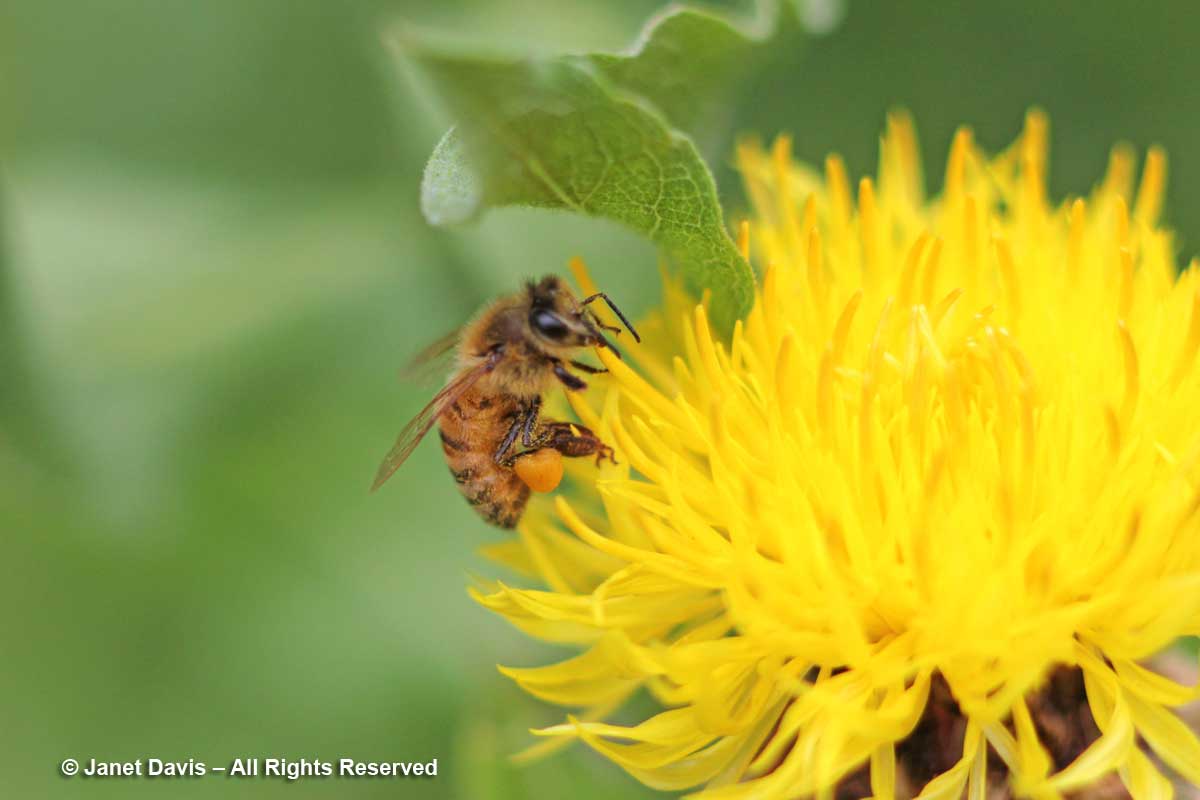
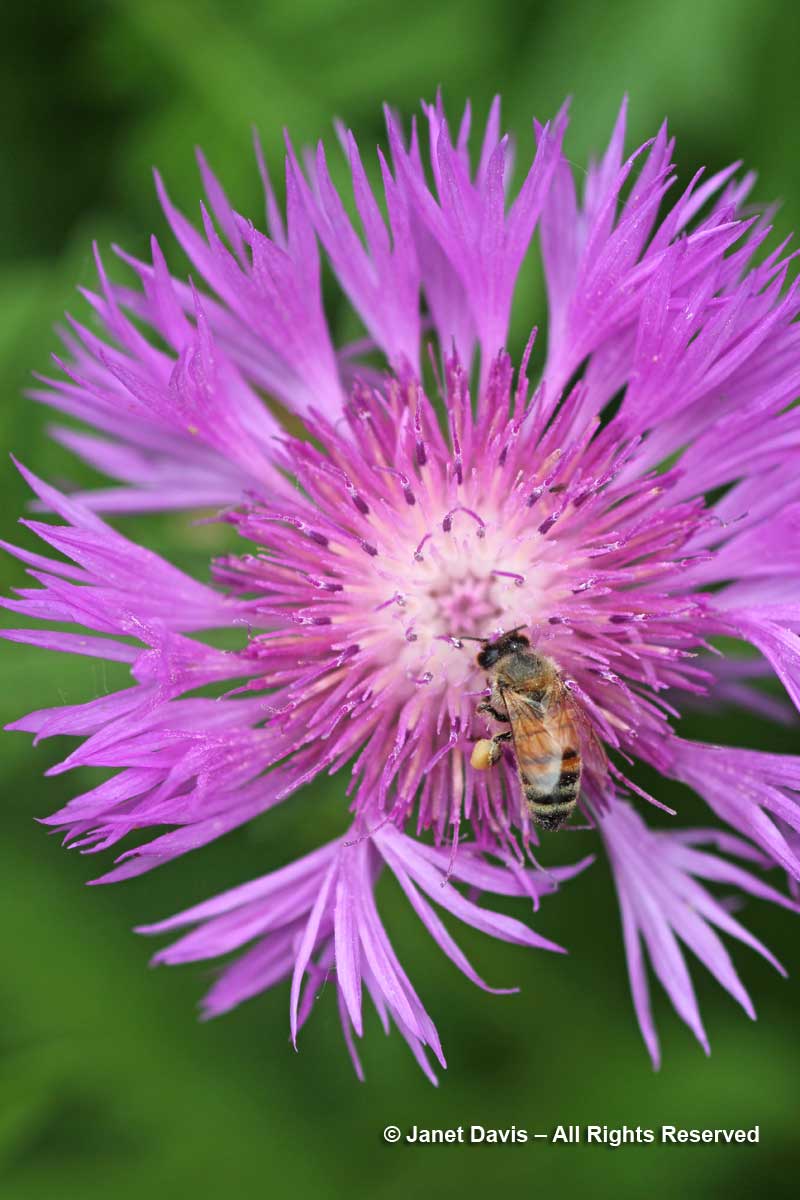
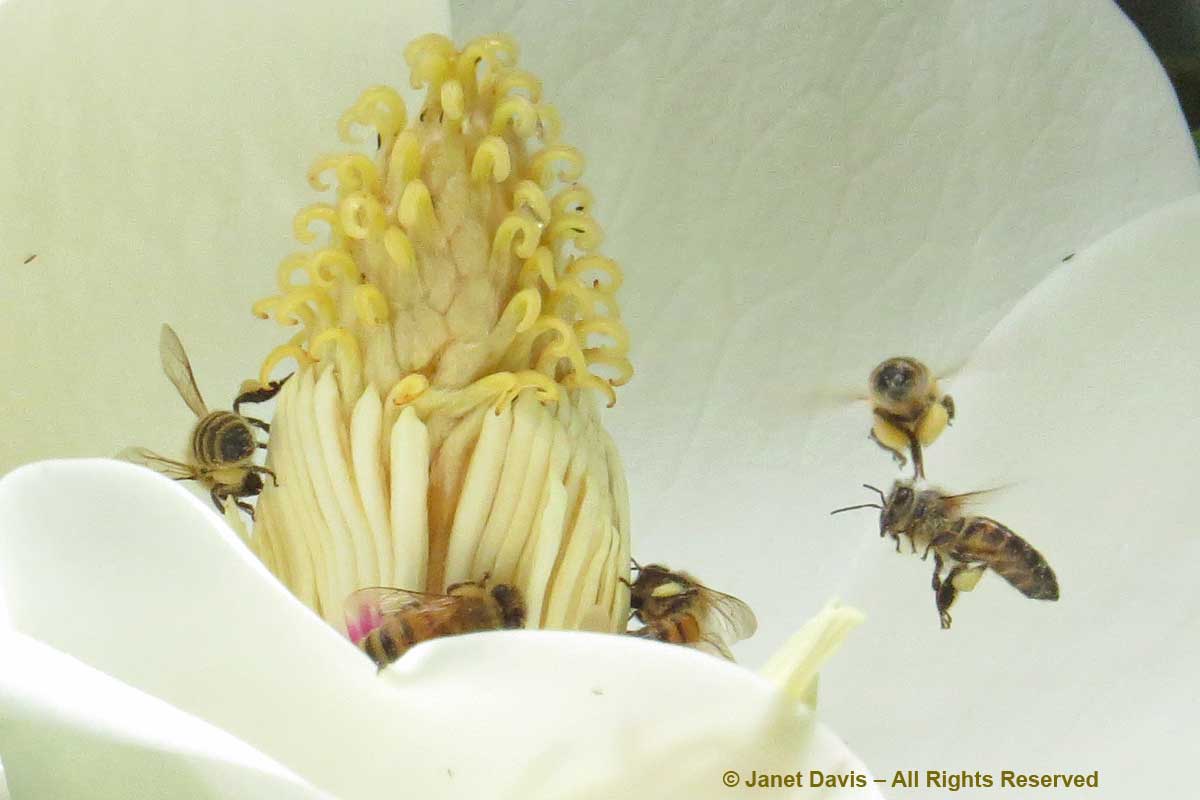
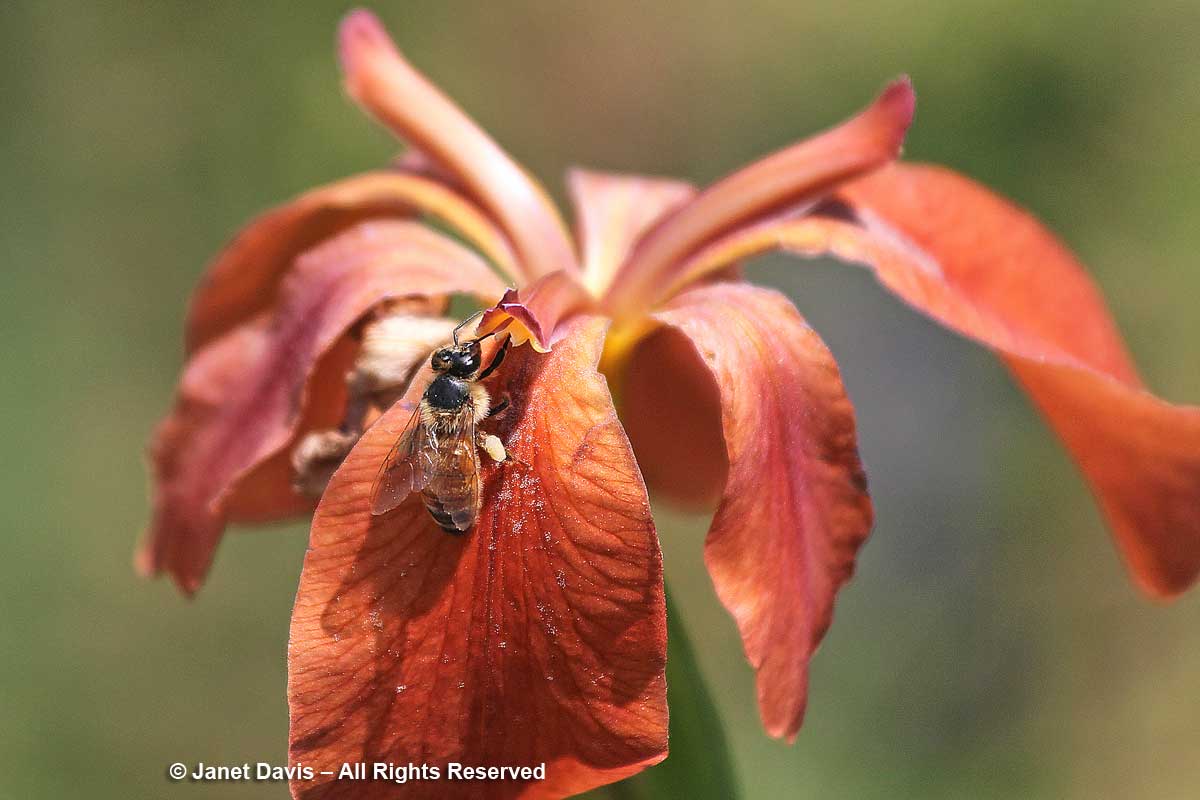
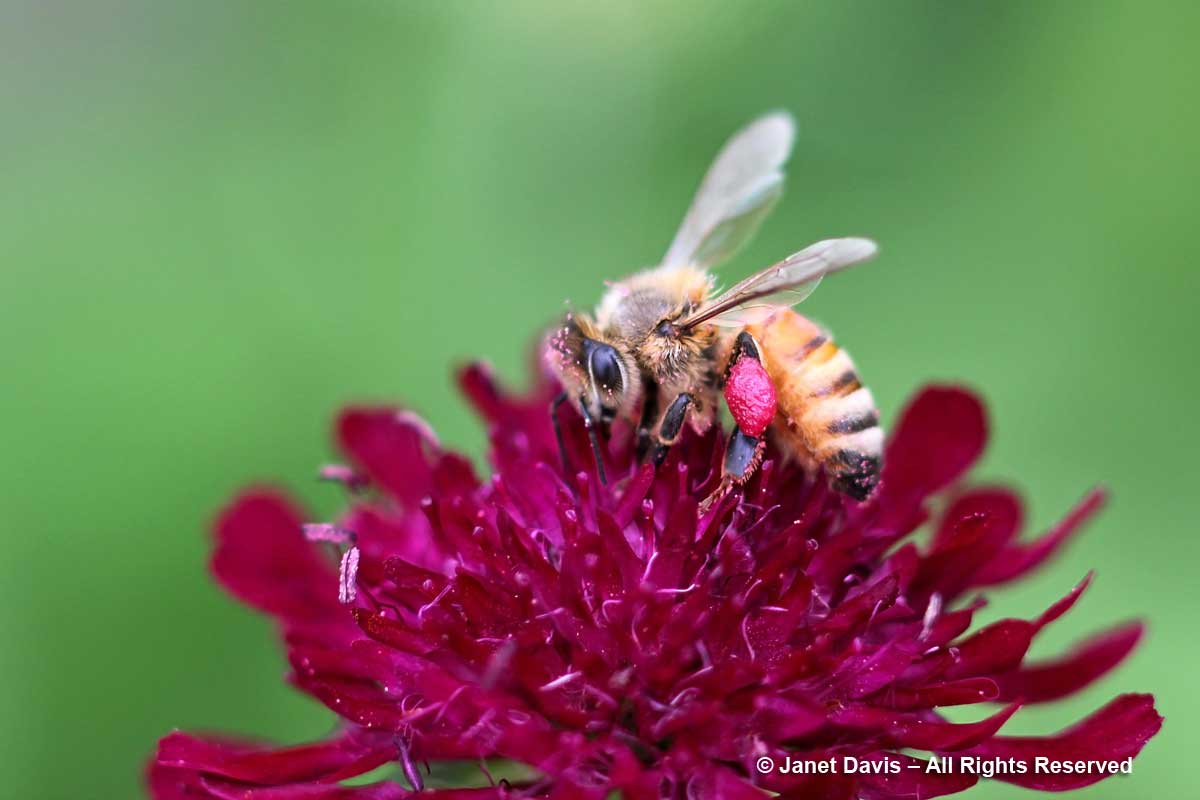
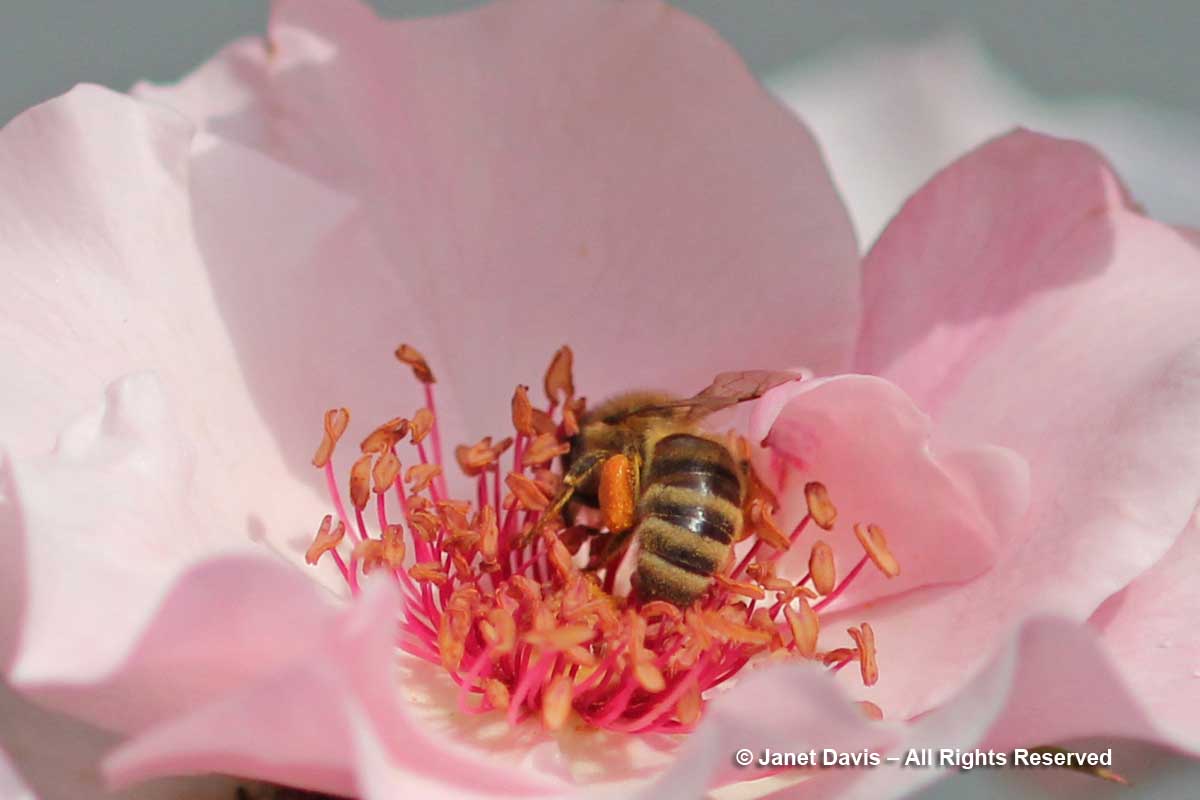
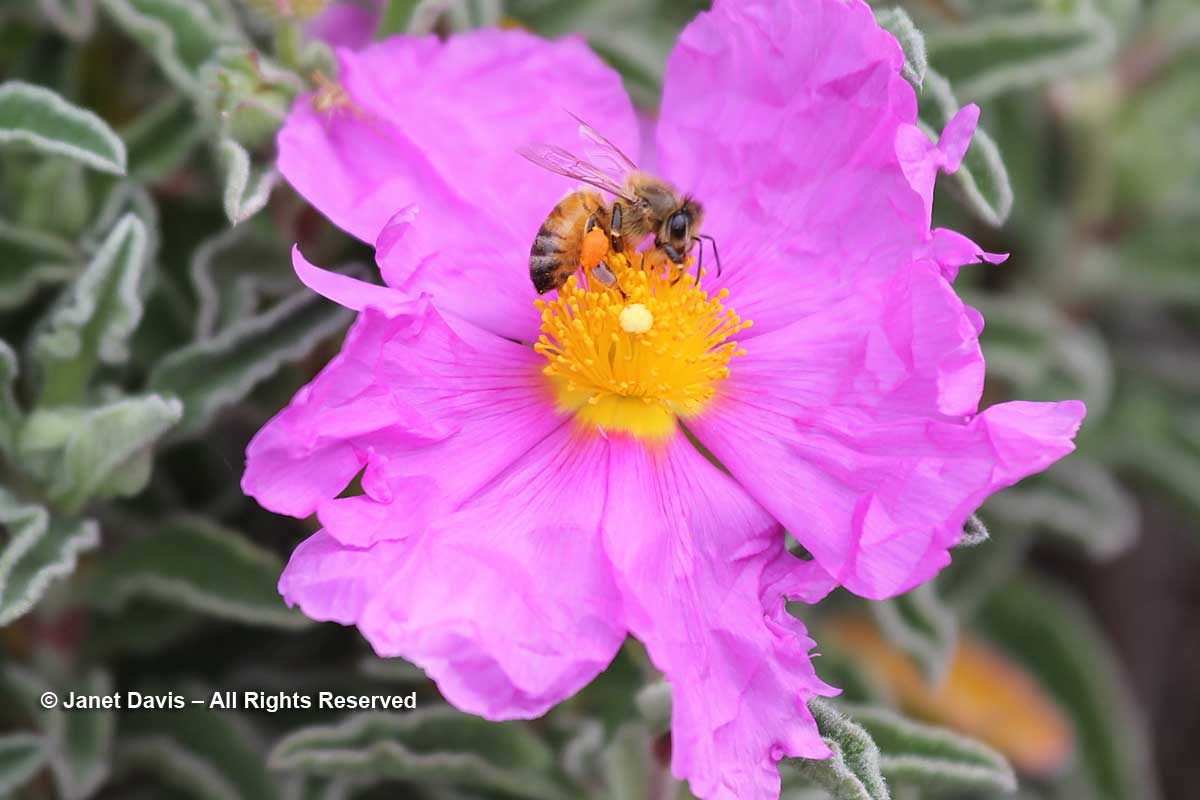
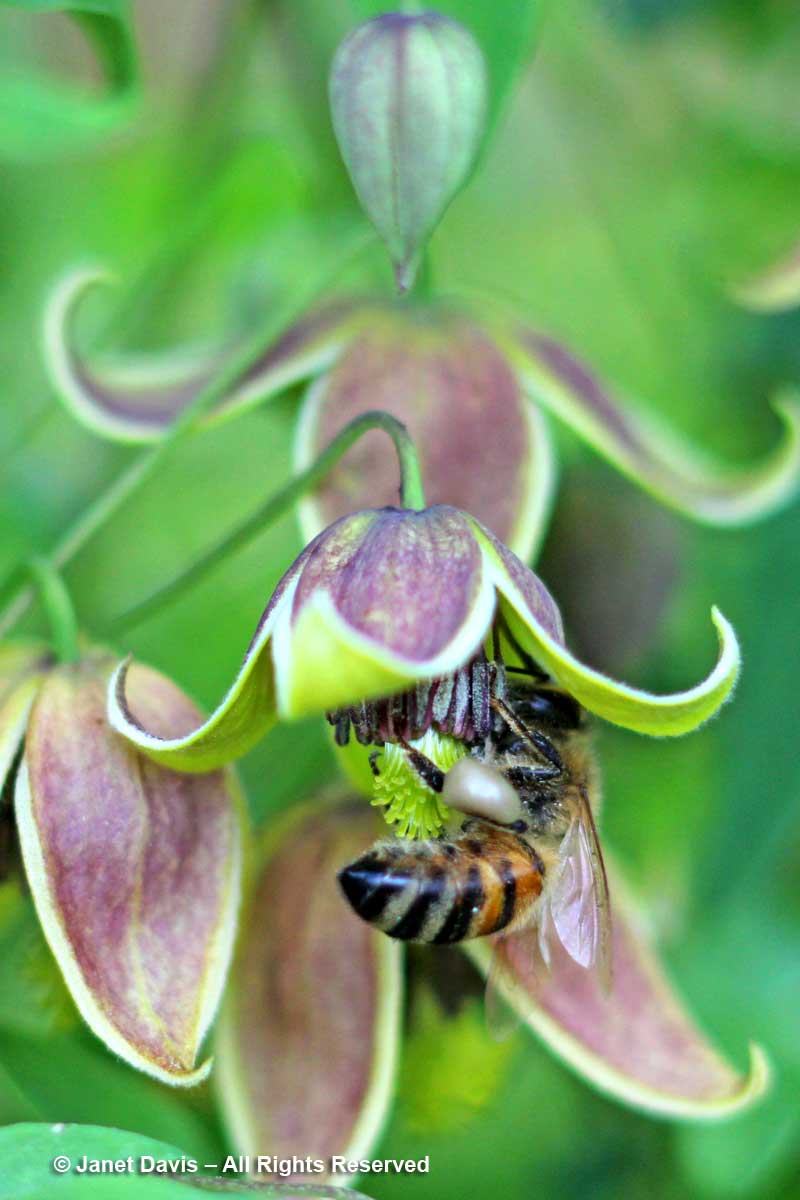
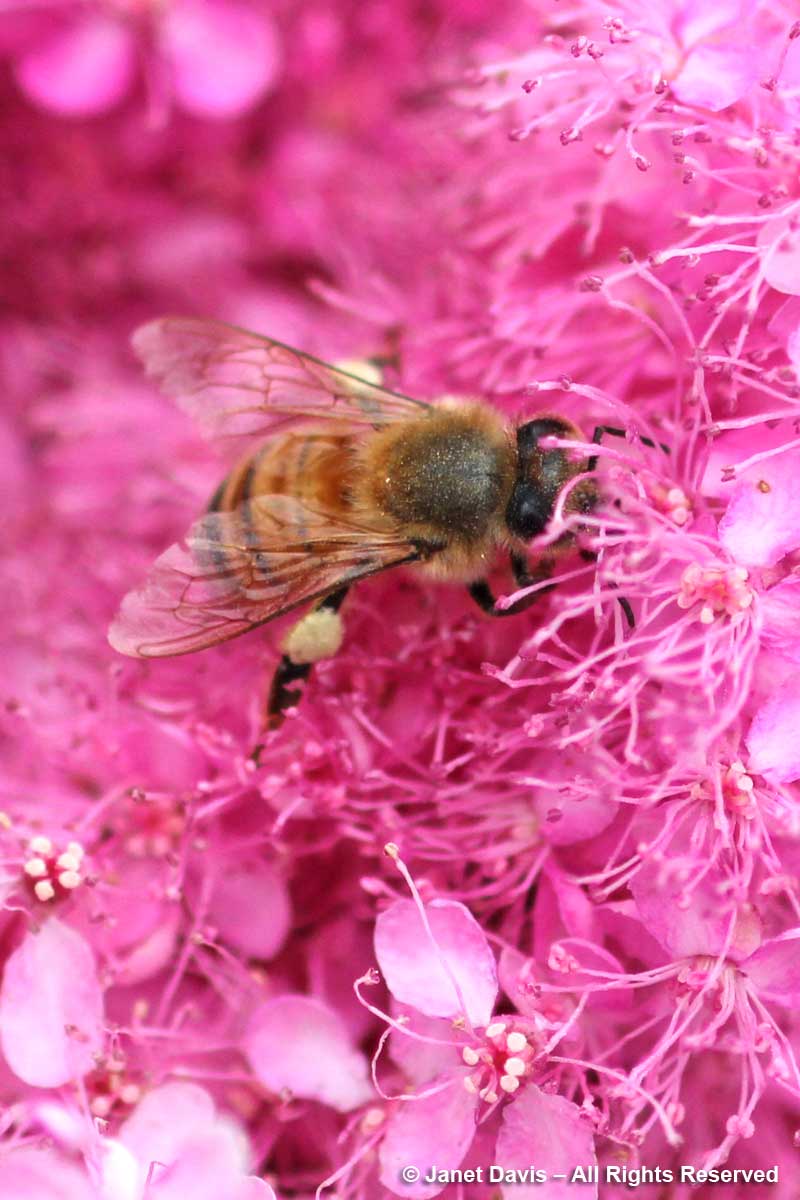
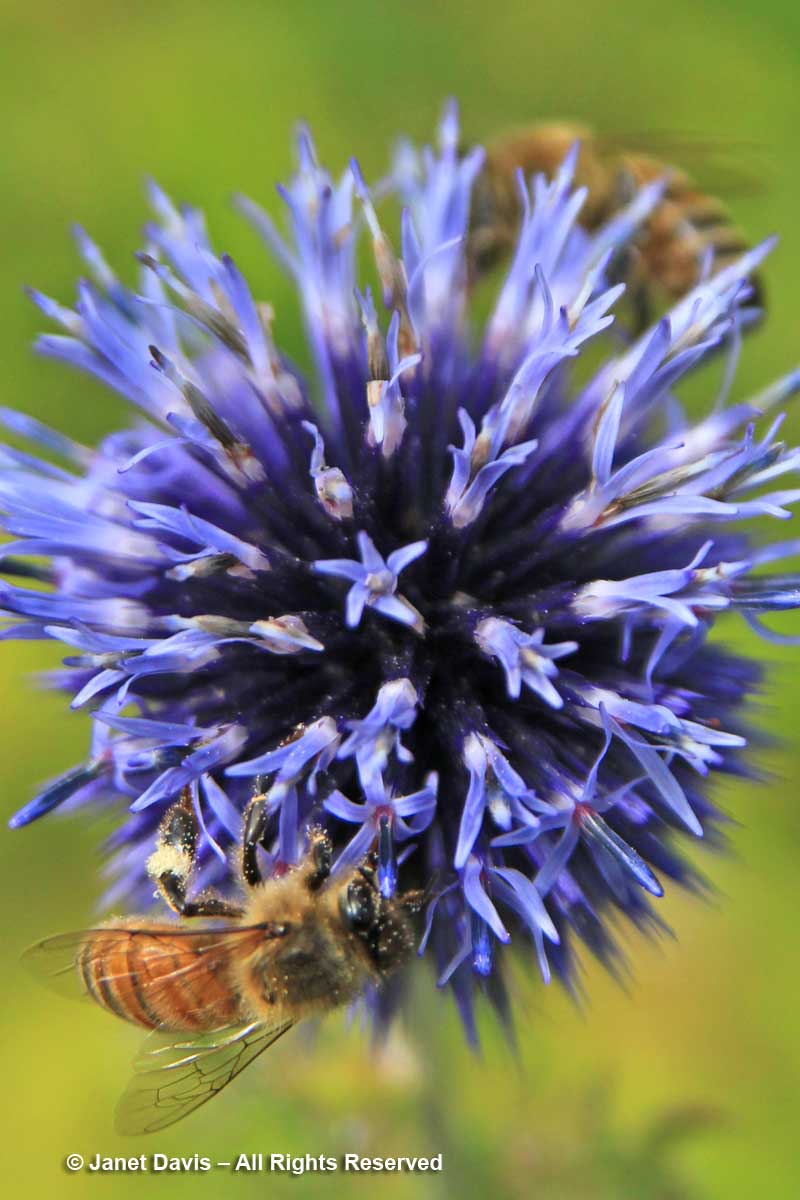
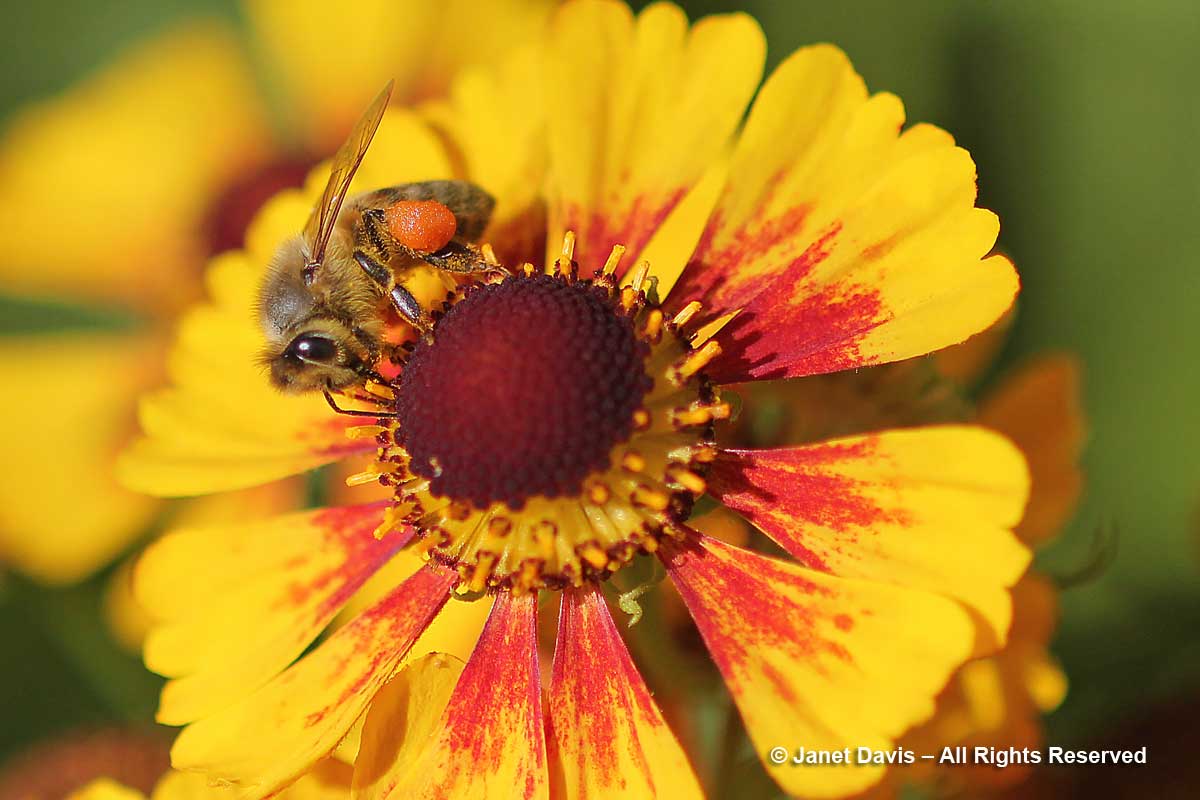
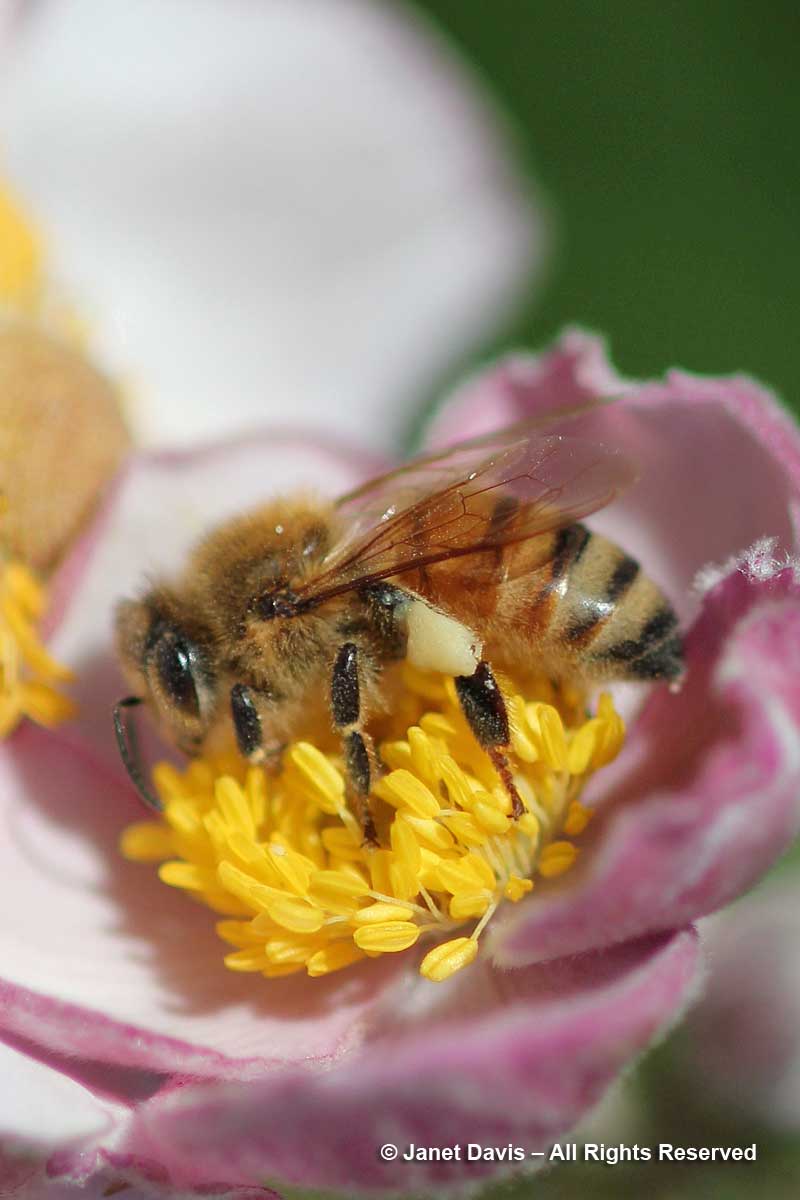
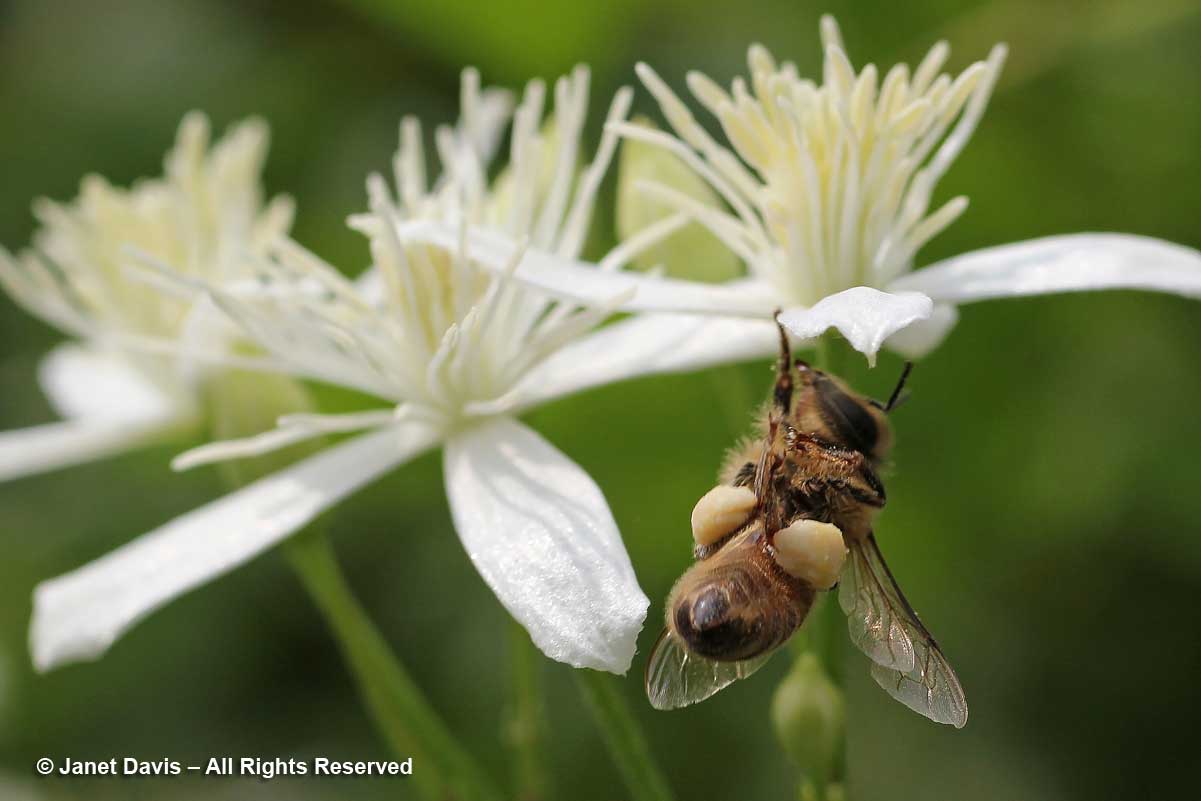
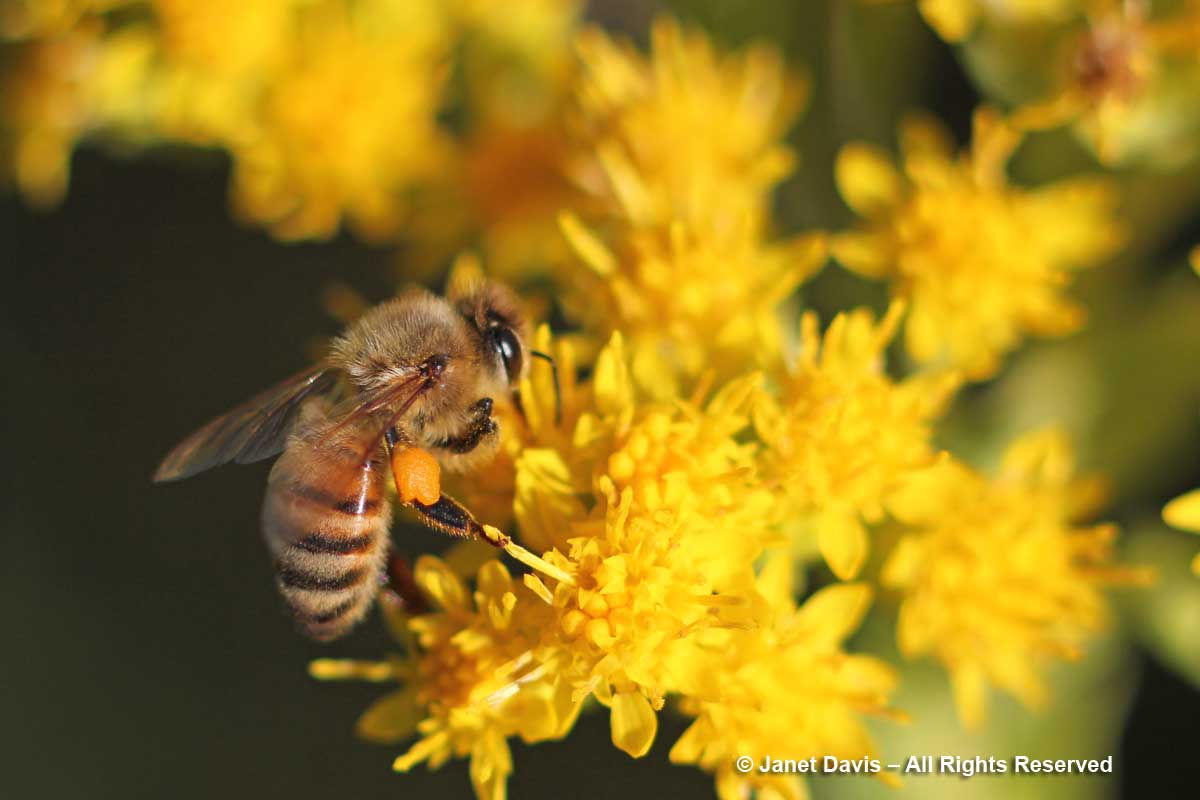
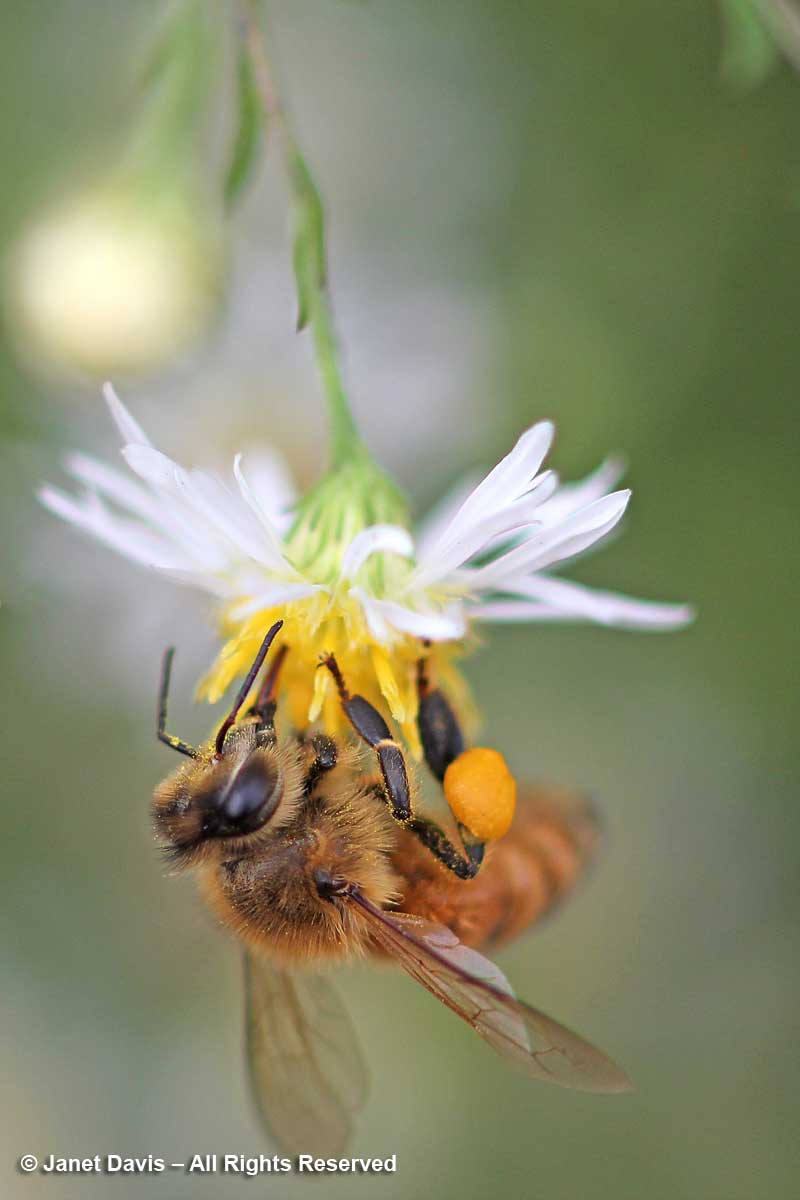
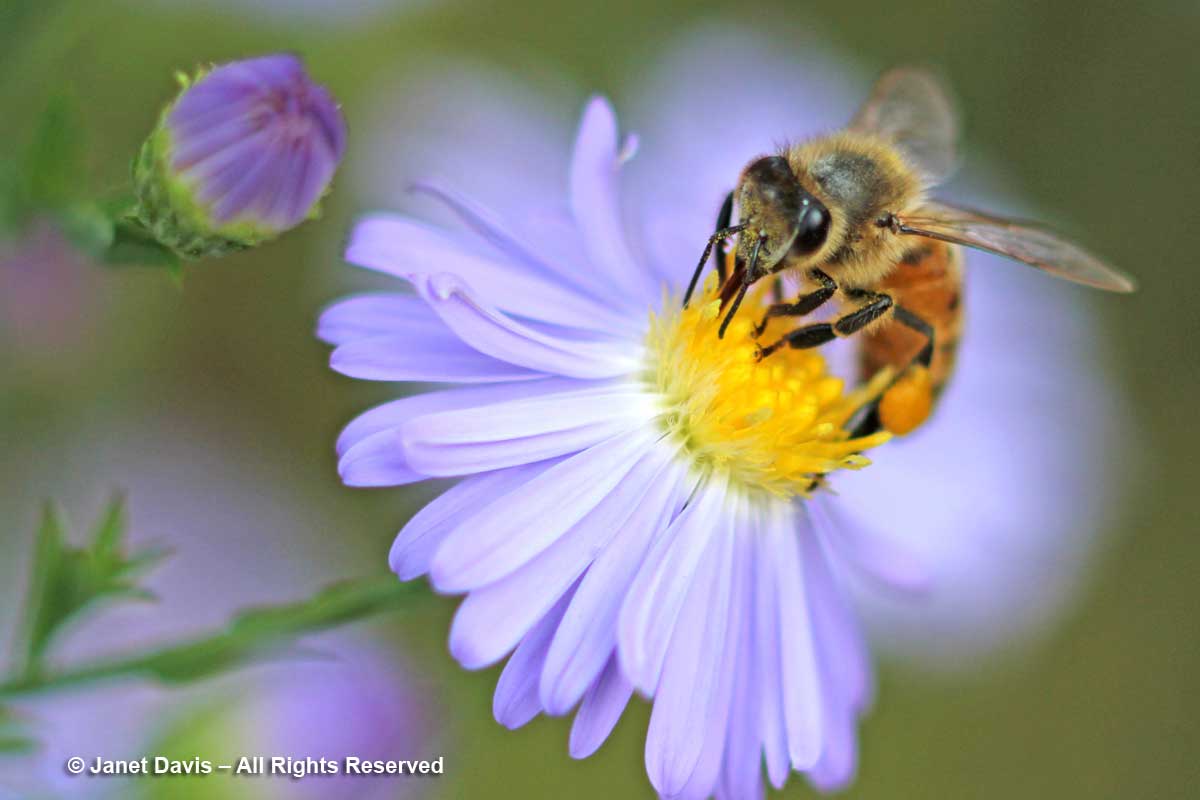
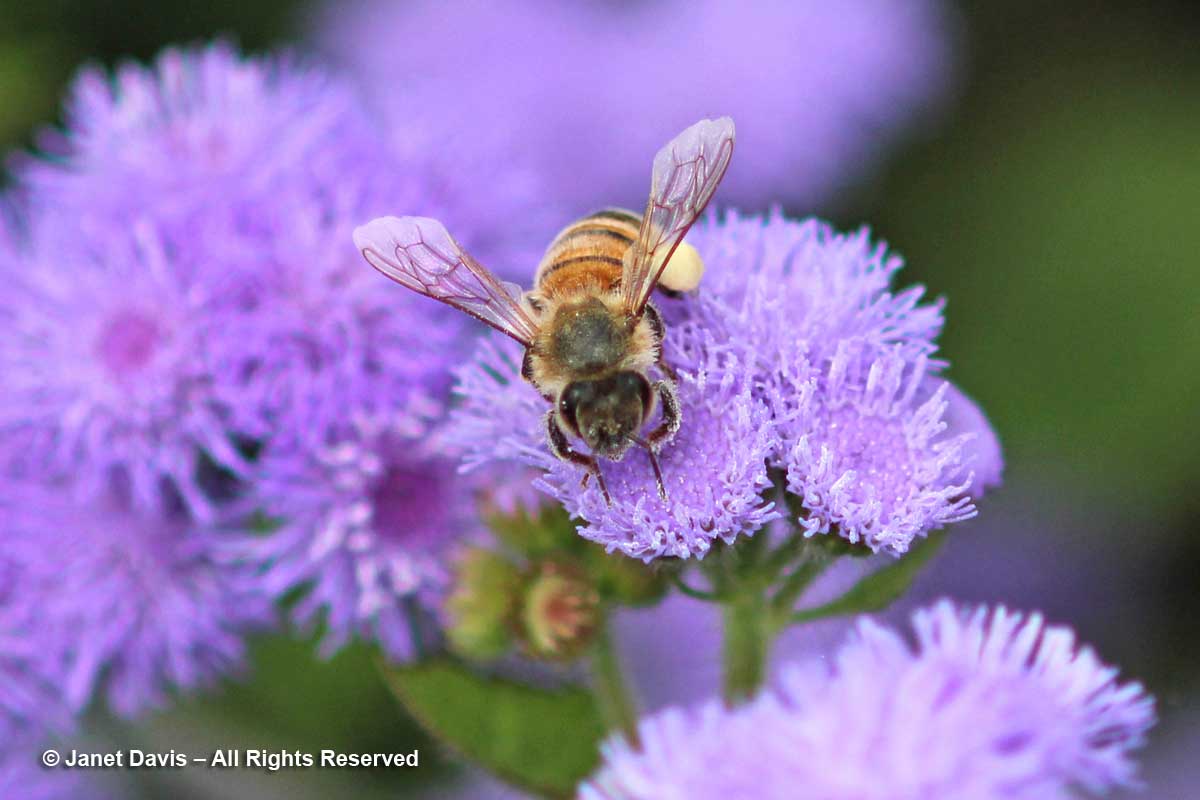
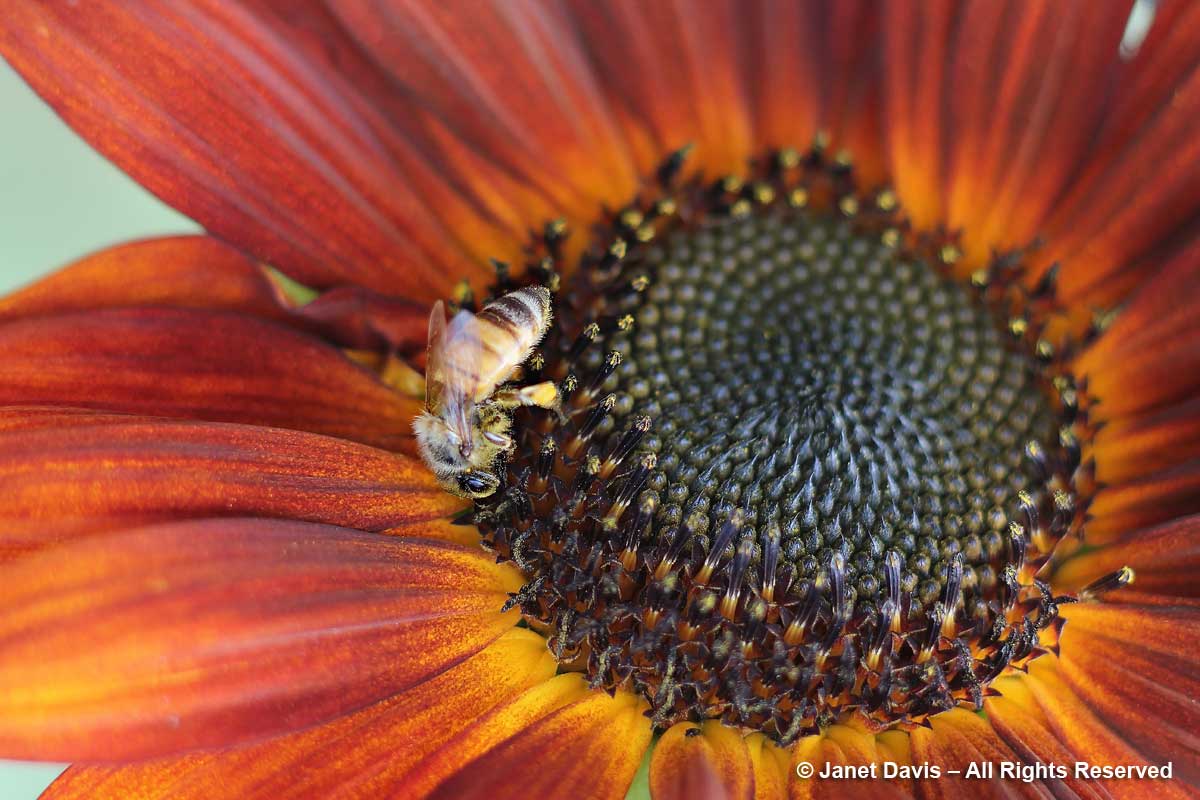
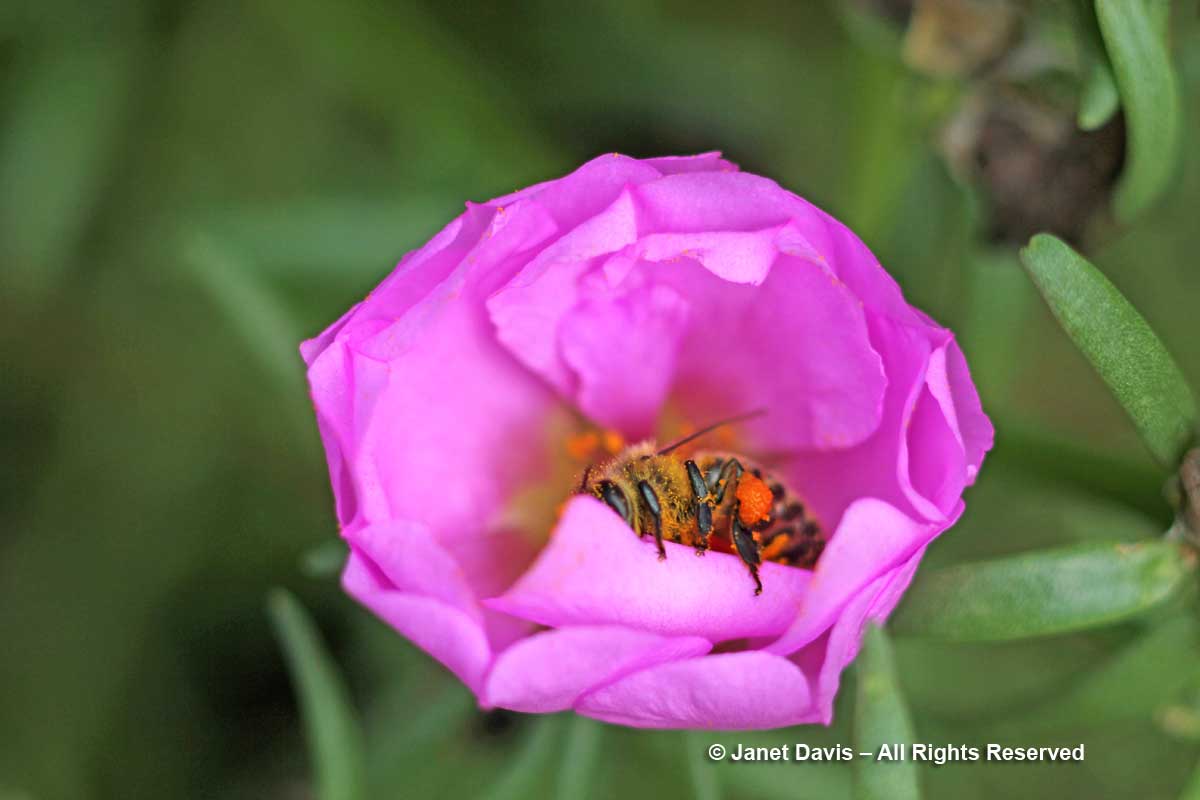
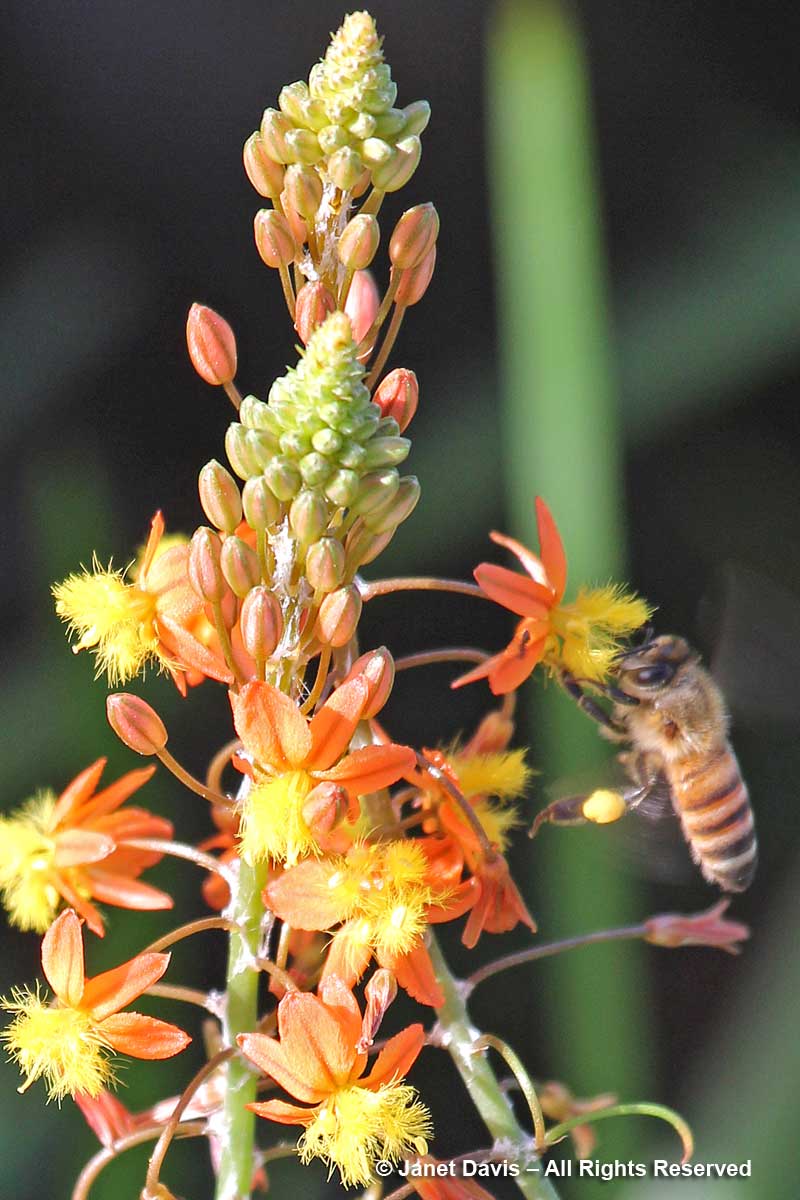
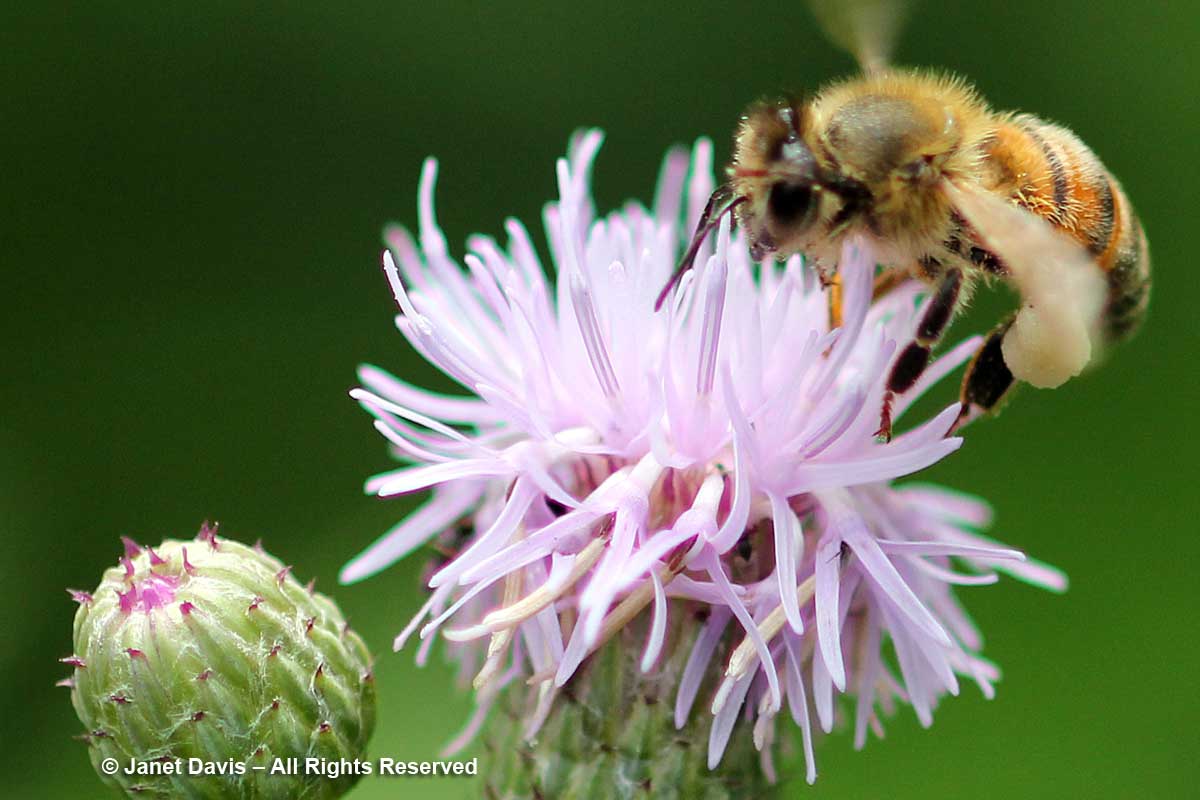
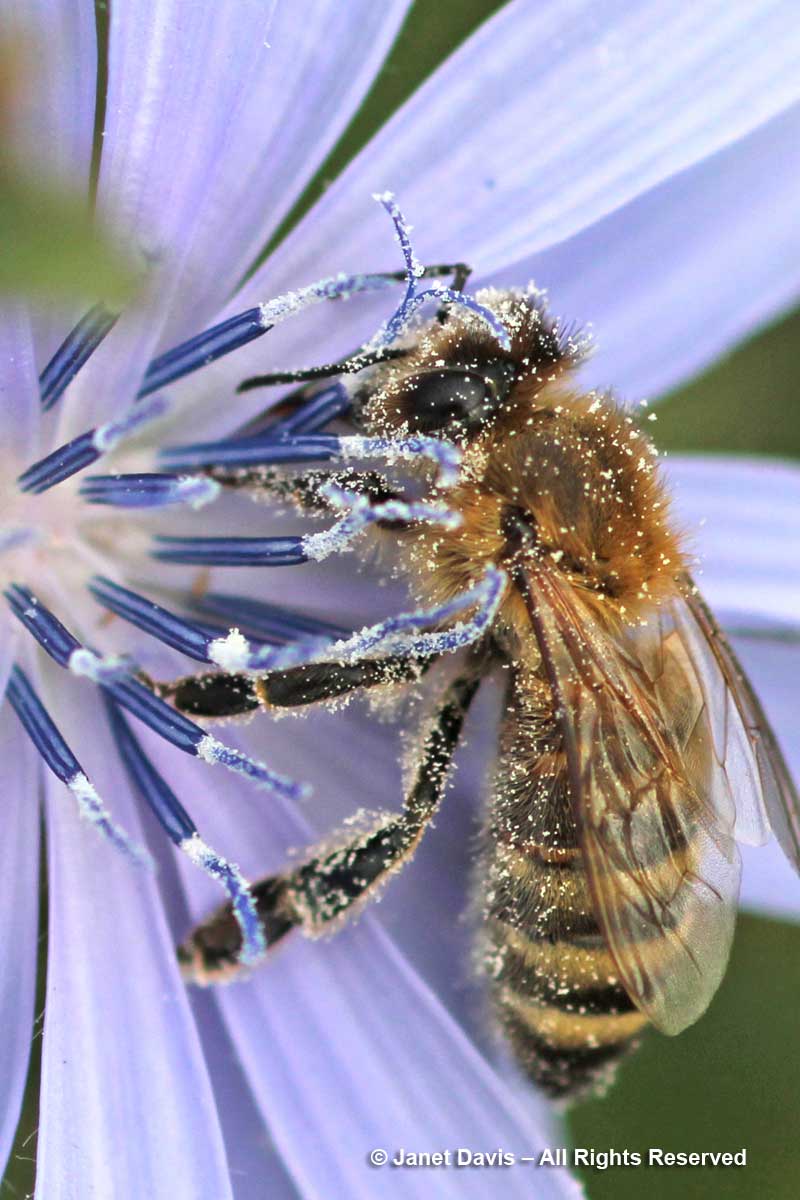
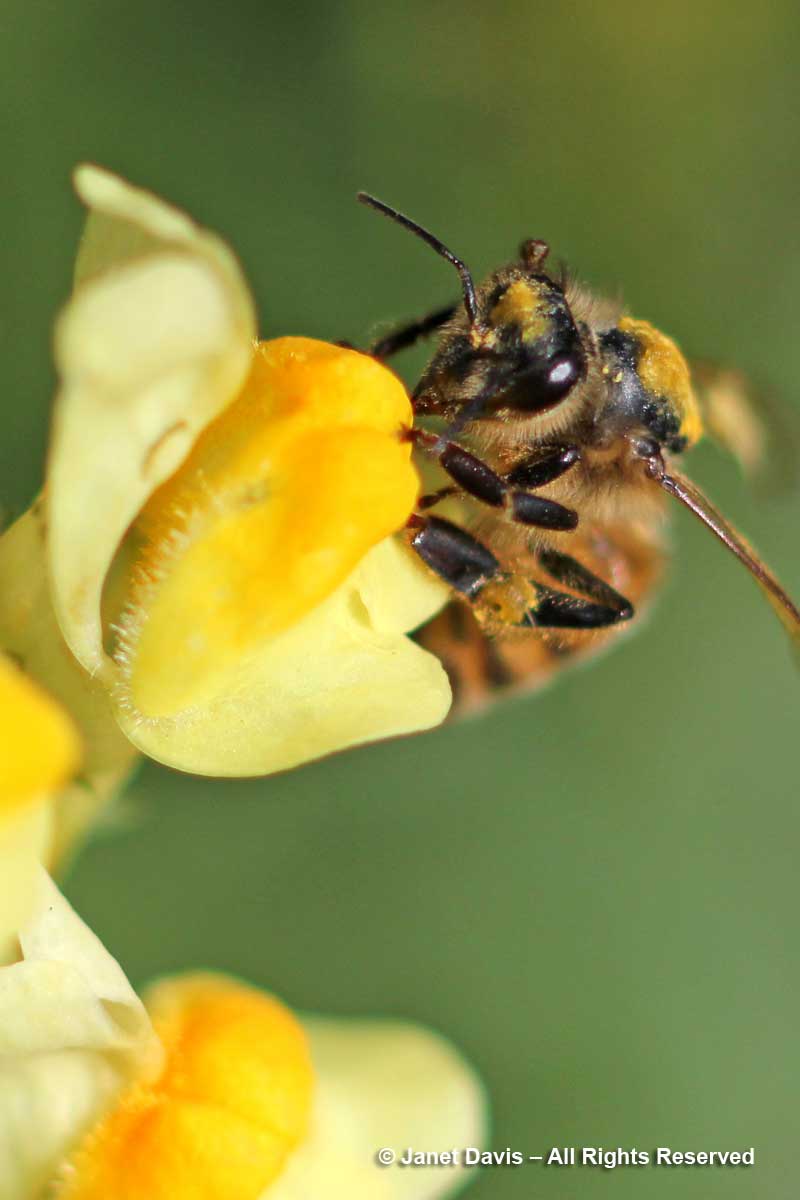
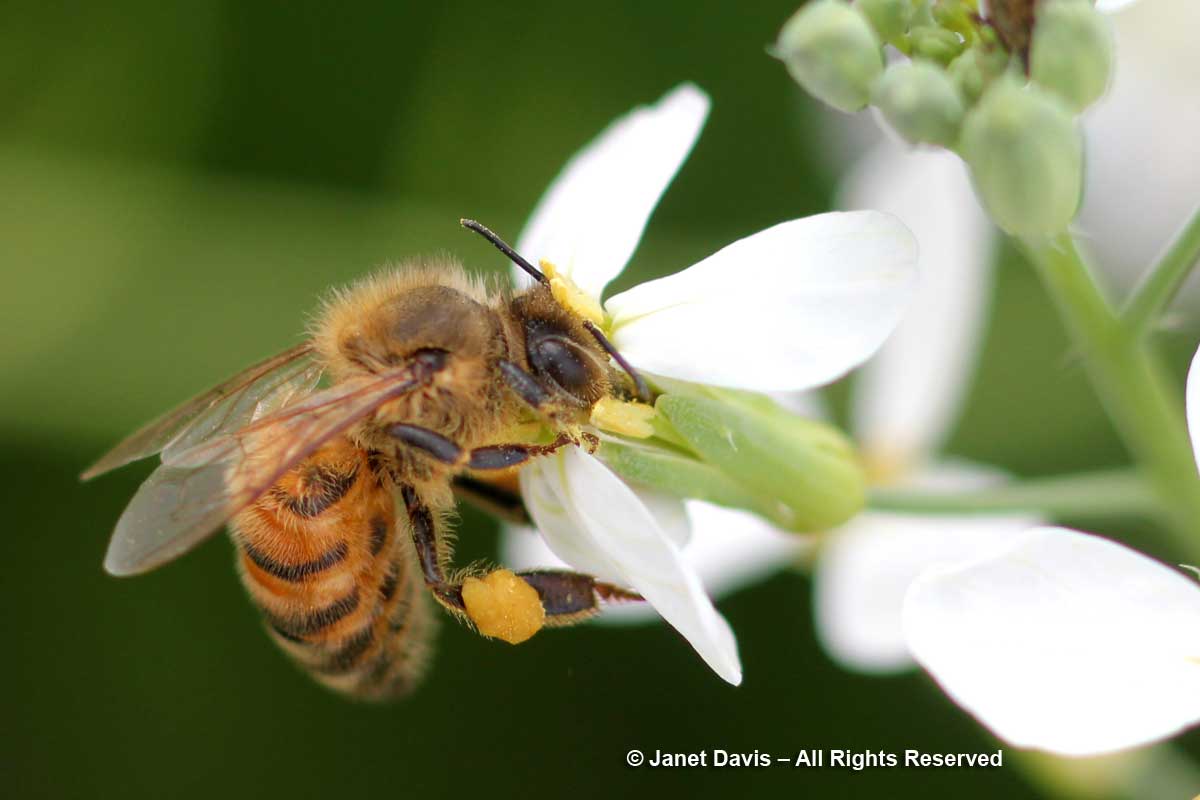

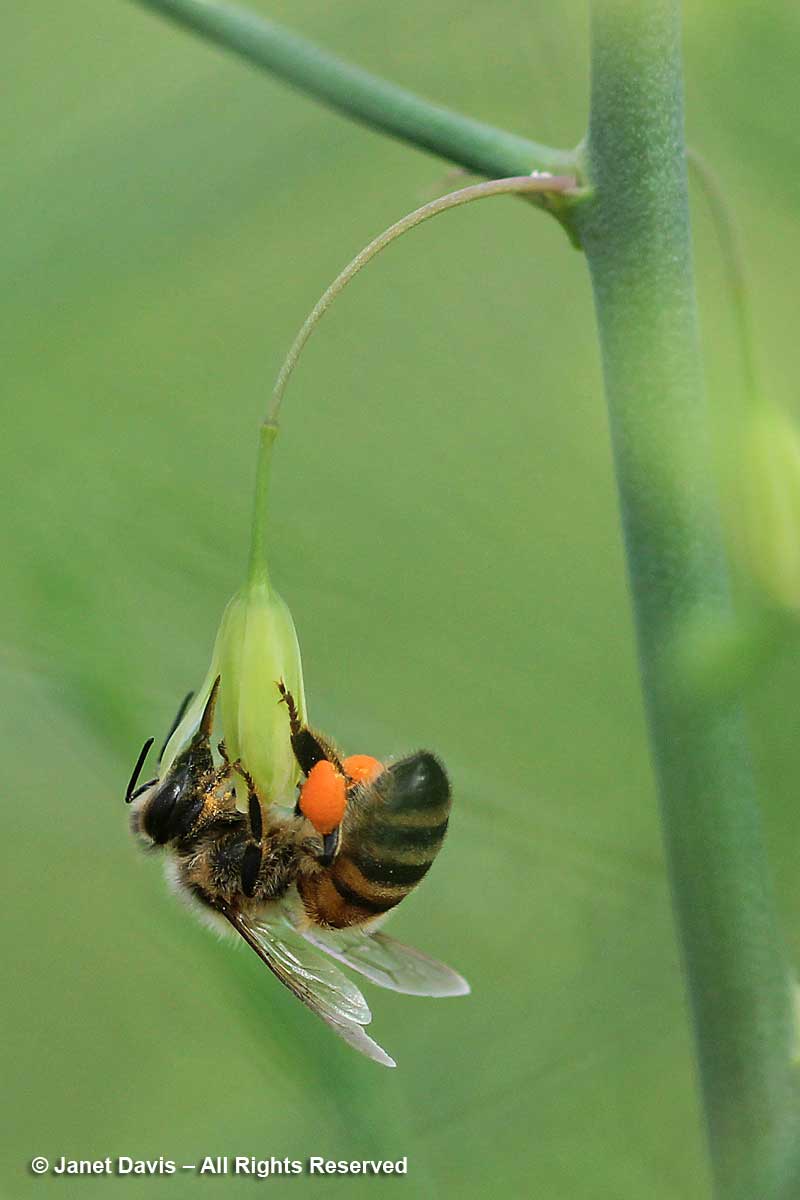
Loved this! Saved the best for last.
Thanks Donna. Asparagus? That was so cool to see.
Wonderfulness…Loved seeing your photos and the many different colored pollens. Very cool.
Thanks Gail. It’s a whole tiny world, those baskets.
Amazing bee pics!
Thank you Pam. I love the macro world.
Wow & Gorgeous !
Thanks, Jessica!
I enjoyed this as a beekeeper. The rainbow of colors of pollen in the hives give me a view of the plant environment surrounding me. You should find henbit and take photos of bees with scarlet red pollen
Thank you David. I shall be sure to look for bees on henbit!